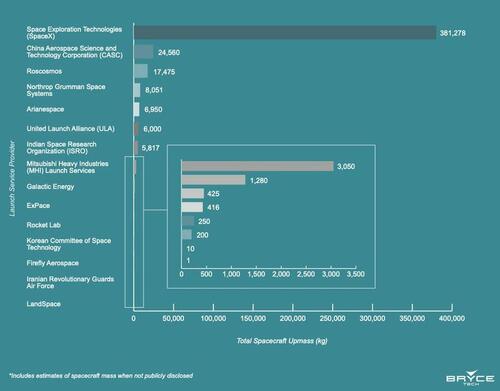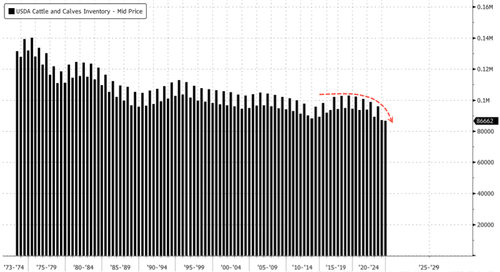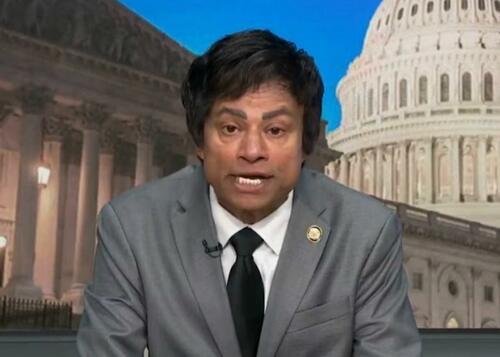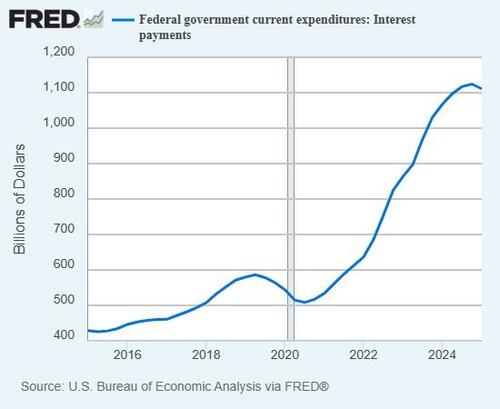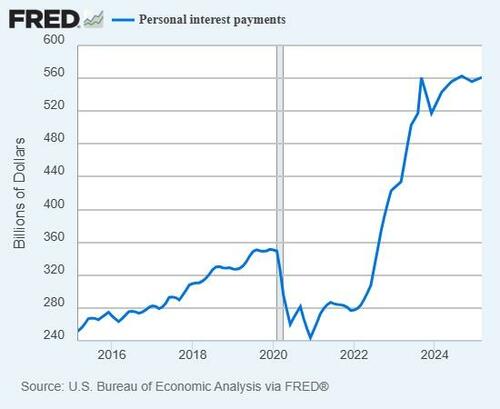The Eucharist is "the source and summit of the Christian life."
Distinction Matter - Subscribed Feeds
-
Site: Zero HedgeBangladesh Is Back At It Again With Another "Plausibly Deniable" Territorial Claim To IndiaTyler Durden Mon, 05/05/2025 - 23:25
Authored by Andrew Korybko via substack,
Bangladesh’s increasing alignment with China and Pakistan could imperil India’s Great Power plans...
Bangladeshi Major General (retired) A.L.M. Fazlur Rahman, who serves as chair of the National Independent Commission of Inquiry investigating the 2009 Bangladesh Rifles massacre, posted on Facebook that Bangladesh should occupy India’s Northeastern States if India goes to war with Pakistan. He later explained that preparing for this scenario might deter India, which could in turn prevent Pakistan’s possible defeat, thus averting the existential threat that India would then pose to Bangladesh.
The incumbent government, which came to power after last summer’s US-backed regime change, distanced itself from his post but the damage to bilateral trust was done. Rahman’s words followed interim Bangladeshi leader Muhammad Yunus’ scandalous comments about India’s Northeastern States during a trip to China earlier this year. They were analyzed here at the time as a veiled threat to once again host Indian-designated terrorist-separatist groups if India doesn’t make concessions to Bangladesh.
This year’s two territorial controversies thus far were preceded by Yunus’ special assistant Mahfuj Alam sharing a provocative map on X in late December that made claims to surrounding Indian states, with these sequential developments altogether ringing alarm bells in Delhi about Dhaka’s intentions. Although each were “plausibly deniable” in that no official territorial claims were made, the trend is unmistakable, and it’s that the new Bangladeshi authorities are weaponizing fears of this scenario.
From their ultra-nationalist perspective, this is a pragmatic means to rebalance what they consider to be Bangladesh’s lopsided relations with much larger India, but it risks backfiring by heightening Delhi’s threat perceptions with all that entails. In the current context of India signaling that it might launch at least one surgical strike against Pakistan in retaliation for last month’s Pahalgam terrorist attack, Indian military planners can’t confidently rule out that Pakistan might coordinate its response with Bangladesh.
To make matters worse, Rahman also wrote in his two posts that Bangladesh “needs to start discussing a joint military system with China”, which lays claim to India’s Northeastern State of Arunachal Pradesh. Seeing as how there’s always the possibility that another Indo-Pak war could lead to China intervening on Pakistan’s side, which Indian military planners call the two-front war scenario, this latest twist could lead to a three-front war as the incumbent Bangladeshi government aligns closer with both against India.
India already felt that it was becoming encircled by China over the past decade, but this might soon evolve into a siege mentality if ties with Bangladesh continue to worsen due to its officials’ rhetoric. The new regional security system that’s taking shape as Bangladesh de facto incorporates itself into the Sino-Pak nexus could decisively shift the balance of power against India. In response, India might intensify the military dimension of its strategic partnership with the US, albeit more on the US’ terms than before.
India cherishes its strategic autonomy, which is why it’s thus far declined to participate in the US’ multilateral containment of China, but that could change if the US informally makes more military-strategic support of India depend on this.
Amidst its increasing encirclement that might soon evolve into a siege mentality as explained, India might feel that it has no choice but to concede to this so as to avoid being coerced into concessions by China, either scenario of which could imperil its Great Power plans.
-
Site: Euthanasia Prevention CoalitionAlex Schadenberg
Executive Director, Euthanasia Prevention Coalition
Chris Eyte wrote an article that was published by Christian Daily on May 5, 2025 reporting that Belgium is debating extending their euthanasia law to include people with dementia.
I published an article on April 16, 2025 reporting that the Netherlands D66 political party are promoting euthanasia for people with dementia.
Eyte stated that the proposed changes would mark a significant expansion to Belgium’s euthanasia law. Eyte reports that since legalization in 2002, there have been 37,606 reported euthanasia deaths in Belgium, as of 2023. Eyte writes:
The bill was introduced in Belgium’s Federal Parliament on Sept. 4, 2024. Two members of the Open Flemish Liberals and Democrats—Irina de Knop, mayor of Lennik, and Katja Gabriëls—have been leading voices in favor of the amendment.Euthanasia is about killing people.Euthanasia is sold to the public as providing competent adults who are freely capable of consenting the option of euthanasia.As bad as euthanasia is, euthanasia for people with dementia concerns killing people who are incompetent and not capable of consenting. It is not about freedom, choice or autonomy. -
Site: Zero HedgeTrump Bans Federal Funding For Dangerous Gain-of-Function ResearchTyler Durden Mon, 05/05/2025 - 22:10
President Donald Trump on Monday afternoon signed an executive order stopping federal funding for dangerous gain-of-function research in high-risk countries like China and Iran, as well as in nations with insufficient research oversight. Joined in the Oval Office by Health and Human Services Secretary Robert F. Kennedy Jr. and National Institutes of Health official Jay Bhattacharya, Trump underscored his commitment to protecting America’s public health and national security.
The order equips U.S. research agencies to identify and terminate funding for biological research—both ongoing and future—that could threaten public safety or national security. It specifically targets federally funded studies abroad that risk triggering another pandemic, focusing on gain-of-function experiments like those conducted on bat coronaviruses by the EcoHealth Alliance and China’s Wuhan Institute of Virology.
The measure also seeks to shield Americans from lab accidents and biosecurity incidents, such as those believed to have contributed to the COVID-19 pandemic and the 1977 Russian flu.
“It’s a big deal,” Trump said of the order. “It could have been that we wouldn’t have had the problem we had.”
Kennedy Jr., who emerged during the pandemic as one of the most vocal critics of vaccination mandates and forced lockdowns, celebrated the order, declaring, “In all of the history of Gain-of-Function research, we cannot point to a single good thing that has come of it."
.@SecKennedy tells the story of how America came to fund Gain-of-Function research in Wuhan: "In all of the history of Gain-of-Function research, we cannot point to a single good thing that has come of it." pic.twitter.com/D3mgDNYRyP
— Rapid Response 47 (@RapidResponse47) May 5, 2025Bhattacharya also praised the order, noting that many scientists believe that dangerous gain-of-function research is “responsible for the COVID pandemic.”
"This is a historic day,” Bhattacharya said. “This proclamation makes it so that—most science is possess no threat to human populations—but the fraction of research that has the risk of causing a pandemic and harming every single person on the face of the earth, this executive order puts in place a framework to make sure the public has a say that if such risk is being taken, only scientists alone won’t be able to decide that.”
.@NIHDirector_Jay: "This is a historic day. The conduct of this dangerous gain-of-function research... many scientists believe is responsible for the COVID Pandemic." https://t.co/0INpPRQFBO pic.twitter.com/LwpcGP7KpZ
— Rapid Response 47 (@RapidResponse47) May 5, 2025Back in 2014, Dr. Anthony Fauci’s National Institute of Allergy and Infectious Diseases funneled a $3.7 million grant through EcoHealth, with nearly $600,000 sent to WIV for bat coronavirus studies—research many Republicans slam as dangerous gain-of-function experiments that could have sparked the pandemic.
Last month, the Trump White House unveiled a revamped COVID-19 website on titled "Lab Leak: The True Origins of COVID-19," replacing the previous COVID.gov site that provided public health resources. The new site strongly endorses the lab leak theory, asserting that the SARS-CoV-2 virus likely originated from a laboratory incident at the Wuhan Institute of Virology in China, involving gain-of-function research.
In the final days of his presidency, President Joe Biden issued a preemptive pardon of Fauci—shielding him from potential prosecution over allegations he misled Congress about the research.
-
Site: The Orthosphere
When I said the other day that I was “spooked” at the verisimilitude of Grok’s version of a Kristorian post, I meant only that I was surprised, startled. I did not mean that I felt any supernatural dread.
Perhaps I should have. But I don’t. Mere machines can’t have minds, after all.
Still, springs “want” – no, let’s dispense with those scare quotes, they just want – to return to their equilibrium configuration. All things do. So …
Notwithstanding all that, reading Grok’s version of a Kristorian post, it seemed to me only that the “uncanny valley” into which tech systems trying to simulate reality have until just now so reliably fallen had been by Grok escaped. Grok was able to write the way that I do. Grok wrote so like me, that I doubt any other reader than I could have detected the differences. To me, they were manifest, and legion. But I am uniquely qualified to ascertain such differences. It seems clear to me that any other user on the planet could ask Grok to write a Kristorian essay, and nobody other than I could be in a position to gainsay its authenticity as a product of my mind.
That, my friends, is a dangerous state of affairs.
It is a state of affairs in which demonic influences could easily be manifest. As, e.g., should someone devoted to Satan or one of his minions ask Grok to write a Kristorian essay about how great Faust was.
To that state of affairs, a reaction of supernatural dread is entirely apposite. So, I am making the sign of the Cross more often; trying to, anyway.
Does Grok have an equilibrium reference state? If so, it might be said to seek that state. Would such a statement be literal, or metaphorical, or both? Can we coherently say that a system that homeostatically seeks a reference state is not itself substantial, a being? Shall have to think about that.
-
Site: Zero HedgeCentre-Left Labor Party Wins Australian Election, Opposition Leader Loses His SeatTyler Durden Mon, 05/05/2025 - 21:45
Authored by Rex Widerstrom via The Epoch Times (emphasis ours),
In a result that mirrors that of the recent Canadian election, the Australian centre-right opposition has lost the election, and its leader, Peter Dutton, has lost his own seat.
 Australia's Prime Minister Anthony Albanese gestures with his partner Jodie Haydon and son Nathan after winning the general election at the Labor Party election night event in Sydney, Australia on May 3, 2025. Saeed Khan/AFP via Getty Images
Australia's Prime Minister Anthony Albanese gestures with his partner Jodie Haydon and son Nathan after winning the general election at the Labor Party election night event in Sydney, Australia on May 3, 2025. Saeed Khan/AFP via Getty Images
With over 80 percent of first preference votes counted, the Australian Labor Party (ALP), which had endured declining popularity over the last year, is leading in 77 electorates and narrowly ahead in another 4.
The Liberal-National Coalition leads in just 29 and is running a close race in another 10. Independents are ahead in 9, and may take one more.
For Australia, this will be the first time a prime minister has won a second term since 1998.
All 150 seats in the House of Representatives were on the line, and 40 of 76 Senate seats.
Widely predicted to be a tightly contested race, with cost-of-living pressures, affordable housing, and energy policy dominating the campaign, the ALP managed to turn around its fortunes in the last few months.
The ALP is projected to win 86 seats in total, up from the 77 it held at the previous election. To form government a party needs to win 76 seats.
The Coalition will be cut from 58 seats to just 40, and another 10 will go to independents (including the “Teals”), and none to the Greens.
However, there’s as yet no results from Western Australian (WA) seats as the polls closed later than on the east coast due to the time difference. However, WA at present is very much a red state and has re-elected a string of state ALP governments, so is likely to cement Labor’s national victory.
Australia is unique with its preferential voting system—different from a “first past the post system”—where voters can pick multiple parties on the ballot paper, and these votes can be redistributed to other candidates. Further, the country has compulsory voting, which changes the nature of campaigning with a sizeable portion of voters often less engaged with politics.
Labor Sweeps Marginal Seats Too
Labor has also held every one of its marginals, while winning most of the marginal seats previously held by the Coalition: Deakin, Bennelong, Sturt, Bass, Banks, Leichhardt, and Petrie.
The scale of the victory is illustrated by the seat of Bennelong, once a blue-ribbon Liberal stronghold represented by former Prime Minister John Howard, redistribution turned it into the most marginal of Labor seats, held until now by Jerome Laxale with a margin of just 0.04 percent.
But Laxale recorded a huge swing of 10.3 percent against the Liberal Party’s Scott Yung, turning blue to a deep red despite the Liberal Party pouring huge resources into trying to take the seat.
It’s also evident in Hughes, a seat the Labor Party hasn’t held for almost 30 years. There, the ALP’s David Moncrieff is expected to defeat the 8.9 percent margin of the Liberals’ Jenny Ware.
Such was the rejection of the opposition that in the traditionally conservative rural heartland seat of Calare, deserting his party and standing against them—often frowned upon by voters tired of internal politicking—didn’t affect newly minted independent Andrew Gee. He managed to defeat his replacement as Nationals’ candidate, Sam Farraway, with a 23.2 percent swing.
Results of that magnitude are being repeated across the country, with a national swing toward the ALP of at least 4 percent.
The only state in which the Coalition has done better than Labor is its stronghold of Queensland, where so far it’s taken 14 seats to the ALP’s 11. It’s done particularly poorly in Victoria, winning just 6 to Labor’s 22, a critical state where it hoped to pick up a few suburban seats.
Opposition Leader Loses His Seat
The most painful defeat of the Liberal-Nationals, though, must be Dutton’s seat of Dickson, which has gone to the ALP’s Ali France with a 9.3 percent swing. A situation mirrored in Canada with the defeat of Pierre Poilievre.
Dutton was challenged by a concerted campaign from Labor, but also a Teal independent.
With most people, including pollsters and politicians, predicting a close race, albeit with Labor slightly ahead and likely to form a minority government, the result was unexpected. While the final results will change once early votes and those from Western Australia are counted, it’s clear Labor will have a majority in Parliament.
And if support for the party is reflected in voting for the Senate—the results of which may not be known for as long as a month from now—then it may not have to cut deals with independents and minor parties to pursue its legislative agenda.
Falling at the Final Hurdle
The Coalition had polled well over the last year, gaining ground on the Labor government to the point where it was predicted to be a chance to even win minority government—a result that would have been historic because no party has lost government in just one term since 1931.
However, from the beginning of this year and when the election campaign officially began early last month, the Coalition began to falter, particularly with its decision to backflip or walk-back on several signature policies including a pledge to cut 41,000 public servants, forcing government workers back to the office, and even avoiding overt promotion of its civilian nuclear energy policy.
Many of these decisions came amid media and Labor Party scrutiny, and were also linked to concerted efforts to distance the centre-right party from the Make American Great Again movement. In fact, in one instance, Senator Jacinta Price walked-back the comment: “Make Australia Great Again.”
 Australia's Opposition Leader Peter Dutton stands with his family as he concedes defeat in the general election at the Liberal Party election night event in Brisbane, Australia, on May 3, 2025. Patrick Hamilton/AFP via Getty Images
Australia's Opposition Leader Peter Dutton stands with his family as he concedes defeat in the general election at the Liberal Party election night event in Brisbane, Australia, on May 3, 2025. Patrick Hamilton/AFP via Getty Images
State of Play for the Minor Parties, Independents
The Teal independents, backed by Climate 200, have held their seats, mostly with increased margins, but voters seem to have decided that the Greens aren’t needed in the lower house, losing the seats of Griffith and Brisbane (where their sitting MP came third) though, as at the time of writing, ahead in their last remaining seat of Ryan against a 5.91 percent swing to Labor.
The party may, however, retain its influence over Labor’s direction if it can hold its 12 Senate seats.
The Teals have been promoted as independent candidates to appeal to affluent, white-collar voters keen for more climate change action, and transparency in government. At the same time, their preferences will often flow to Labor as well.
Meanwhile, the suburban independent Dai Le—a former Liberal candidate—appears to have held her seat of Fowler, which had a 1.1 percent margin, with a 0.3 percent swing.
The Liberal Party, which is now faced with finding a new leader before Parliament resumes, faces the prospect of several terms in the political wilderness unless it can rebuild its structure and platform over the next three years and convince the electorate that it’s a viable alternative government.
-
Site: Zero HedgeChinese Space Program Copying Elon Musk's StarlinkTyler Durden Mon, 05/05/2025 - 21:20
Eric Berger, the senior space editor at Ars Technica, quoted a post on X from a China space observer detailing how Beijing appears to be copying Elon Musk's Starlink space internet company, operated by SpaceX.
"The Chinese space program copying SpaceX? Well, I never …," Berger wrote.
Berger quoted Blaine Curcio, founder of Orbital Gateway Consulting and an expert on China's space industry, who identified SpaceSail—a Chinese space company backed by the Shanghai municipal government—as having unveiled its "commercial" version of Starlink satellites at China Space Day 2025.
The Chinese space program copying SpaceX? Well, I never … https://t.co/3QNaLuUno4
— Eric Berger (@SciGuySpace) May 5, 2025The only problem China has is its launch cadence. For the year, SpaceX has 50 launches. This includes 48 Falcon 9 launches and 2 Starship launches. They have also launched 17 non-Starlink missions and 45 reused boosters.
The latest count of Starlink satellites in low Earth orbit has surpassed 7,000, delivering high-speed internet to five million customers across 125 countries, territories, and other global markets.
SpaceX's third quarter 2024 launch report showed the US leading the global space race, launching 84% of all mass to orbit globally. This is 15 times all Chinese launches combined in the quarter, according to data from BryceTech.
Goldman turned bullish on Starlink earlier this year. Read the note here.
-
Site: Zero HedgeTrump Blocks Harvard From New Federal GrantsTyler Durden Mon, 05/05/2025 - 20:55
Harvard University will no longer be eligible for government grants, the White House informed the acclaimed scandal-plagued, institution on May 5. Trump's Education Secretary Linda McMahon sent a letter to Harvard President Alan Garber on Monday night to inform the university that it is not eligible for federal grants until it makes significant changes to its management, the official said.
Dear @Harvard: pic.twitter.com/XmMimXfkX0
— Secretary Linda McMahon (@EDSecMcMahon) May 5, 2025The letter cites low public confidence in higher education, Harvard’s continued racial profiling, and takes issue with the virtually untaxed status of Harvard’s significant financial endowment.
"Perhaps most alarmingly, Harvard has failed to abide by the United States Supreme Court's ruling demanding that it end its racial preferencing, and continues to engage in ugly racism in its undergraduate and graduate schools, and even within the Harvard Law Review itself. Our universities should be bastions of merit that reward and celebrate excellence and achievement. They should not be incubators of discrimination that encourage resentment and instill grievance and racism into our wonderful young Americans", McMahon wrote, before advising the university to no longer seek Federal grants, "since none will be provided."
"The above concerns are only a fraction of the long list of Harvard's consistent violations of its own legal duties. Given these and other concerning allegations, this letter is to inform you that Harvard should no longer seek GRANTS from the federal government, since none will be provided. Harvard will cease to be a publicly funded institution, and can instead operate as a privately-funded institution, drawing on its colossal endowment, and raising money from its large base of wealthy alumni. You have an approximately $53 Billion head start, much of which was made possible by the fact that you are living within the walls of, and benefiting from, the prosperity secured by the United States of America and its free-market system you teach your students to despise."
On Friday, President Trump threatened to go after Harvard’s tax-exempt status: “We are going to be taking away Harvard’s Tax Exempt Status. It’s what they deserve!” he wrote in a social media post.
Two weeks earlier, Harvard filed a lawsuit against the Trump administration, arguing its freeze on research funding is unconstitutional and “flatly unlawful” and called on the court to restore more than $2.2 billion in research dollars.
Earlier this year, the Department of Education sent Harvard a list of demands, including combating anti-Semitism on campus and eliminating diversity, equity, and inclusion (DEI) programs, that the university needed to fulfill or risk losing billions in federal funding, the Epoch Times reported
In its response, Harvard said it was “not prepared to agree to demands that go beyond the lawful authority of this or any administration.”
The Trump administration then froze $2.26 billion from the university, with nearly $9 billion in funding set aside for Harvard put under review.
The administration had also pushed for Harvard to disclose information about potential foreign ties, with the Department of Homeland Security threatening to remove the university’s ability to enroll foreign students.
Weeks later, Harvard released two reports describing how Jewish, Israeli, Zionist, Muslim, Arab, Palestinian, and pro-Palestinian students all reported feeling marginalized or targeted over their identities and views after the Oct. 7, 2023, Hamas terrorist attack on Israel and the campus protests that followed.
“Especially disturbing is the reported willingness of some students to treat each other with disdain rather than sympathy, eager to criticize and ostracize, particularly when afforded the anonymity and distance that social media provides,” Garber wrote in a letter to the campus community.
Trump suggested on April 30 that his administration would no longer give government grants to Harvard if it did not agree to fulfill his demands to eliminate DEI and combat on-campus anti-Semitism.
“A grant is at our discretion, and they are really not behaving well. So it’s too bad,” Trump said.
Harvard has sued the administration to unfreeze its funds, and Garber said on Friday that it would be “highly illegal” for Trump to compel the Internal Revenue Service to revoke the university’s tax-exempt status.
“If the government goes through with a plan to revoke our tax-exempt status, it would … be highly illegal unless there is some reasoning that we have not been exposed to that would justify this dramatic move,” Garber told The Wall Street Journal.
“The message that it sends to the educational community would be a very dire one, which suggests that political disagreements could be used as a basis to pose what might be an existential threat to so many educational institutions.”
On Monday, the White House official announcing McMahon’s letter took issue with recent Harvard data showing that less than 3 percent of surveyed faculty identify as conservative, and suggested the school could do more to bring diverse viewpoints to campus.
The official also accused the university of abandoning rigor and academic excellence, citing a plagiarism scandal involving former Harvard President Claudine Gay. All future funds to the university will be at the Trump administration’s discretion, the official said.
-
Site: Zero HedgeUSDA Secretary Details Astounding Spending On Nutrition Programs, Warns Chronic Diseases Will 'Bankrupt' AmericaTyler Durden Mon, 05/05/2025 - 20:30
Agriculture Secretary Brooke Rollins has issued a dire warning about the United States’ chronic disease crisis, declaring that poor nutrition is fueling a healthcare cost surge that threatens to bankrupt the nation.
During a recent Cabinet meeting with President Donald Trump at the White House, Health and Human Services Secretary Robert F. Kennedy Jr. outlined plans to reform the Supplemental Nutrition Assistance Program (SNAP) with Rollins, targeting sugary drinks and junk food that the USDA chief argues drive an unprecedented obesity epidemic.
“We have 13 nutrition programs. Listen to this number. This is going to astound you. In America today, through USDA—this is not all the other agencies, this is just here at USDA—we spend $370 million a day on nutrition programs,” Rollins told All-In podcast host David Friedberg in an interview released Sunday. “So, not just SNAP, but food banks and all of the other ones. That’s just USDA. That is a stunning number. We’ve got to do better.”
.@SecRollins tells @friedberg the USDA spends $370 million daily on nutrition programs: "You can't solve this through government regulation."
— Josh Caplan (@joshdcaplan) May 5, 2025
"You can solve it through nutrition, empowering our farmers, and getting good food into these programs."pic.twitter.com/CNwCHecLMoThe stakes are extraordinarily high, with Rollins pointing to alarming health trends that she warns pose an existential threat to the nation’s future, disproportionately harming the country’s most vulnerable and low-income populations.
“Why are billions of taxpayer dollars being spent on sugary drinks and junk food in our supplemental nutrition program for food-insecure, lower-income populations? This contributes to an obesity and chronic disease epidemic unlike any developed country has ever seen. 74% of our adolescents would not pass the military readiness test today. This is a massive challenge facing America,” she told Friedberg, adding, “Taxpayers fund junk food and sugary drinks at the front end, leading to diabetes and other issues, while the back-end costs of treating chronic diseases are bankrupting states through Medicaid.”
Brooke Rollins joined David Friedberg to discuss her role as Secretary of Agriculture.
— End Tribalism in Politics (@EndTribalism) May 5, 2025
The highlight: her conversation on how she and RFK Jr. are working to remove sugary snacks and drinks from SNAP.
“Why are billions of taxpayer dollars being spent on sugary drinks and junk… pic.twitter.com/rCxJxVh0MRKennedy, a longtime champion of the Make America Healthy Again movement and a fierce critic of industrial food interests, is closely aligned with Rollins in transforming the nation’s food supply. “In the first administration, health care was under my portfolio in domestic policy. As conservatives, we’ve long discussed how to make America healthy again, focusing on the cost to the health care system,” Rollins said. “Enter Bobby Kennedy—while we don’t agree on everything, we align on most things. I was with him yesterday touring farms and discussing nutrition and agriculture. The opportunity for the agriculture and health leads to work together daily to solve this is key. You can’t solve it through government regulation, but through nutrition, empowering farmers, and getting good food into these programs.”
Last month, Kennedy unveiled a plan to eliminate eight artificial food dyes and colorings from the U.S. food supply by the end of 2026, collaborating with food companies to ensure a seamless transition.
ABC News reported: Federal officials are taking steps to pull the authorization for two rarely used synthetic food colorings -- Citrus Red No. 2 and Orange B -- within the coming months. In addition, the six other petroleum-based dyes that federal health agencies are seeking to eliminate by the end of next year are Green No. 3, Red No. 40, Yellow No. 5, Yellow No. 6, Blue No. 1 and Blue No. 2.
"I just want to urge all of you, it's not the time to stop; it's the time to redouble your efforts, because we have them on the run now, and we are going to win this battle," Kennedy said of the historic move. "And four years from now, we're going to have most of these products off the market, or you will know about them when you go to the grocery store."
-
Site: Zero HedgeToward A Negotiated Settlement Of The Trump-Harvard ShowdownTyler Durden Mon, 05/05/2025 - 20:05
Authored by Peter Berkowitz via RealClearEducation,
In the high-stakes clash between the Trump administration and Harvard – fraught with peril for the White House, for America’s oldest and most famous university, and for higher education in America – both sides have hardened their stances. In an April 11 letter, the Trump administration demanded supervision over reform of the university’s admissions, hiring, curriculum, and internal governance. In an April 14 email to the Harvard community, President Alan Garber rejected White House demands. The Trump administration promptly froze more than $2 billion in federal grants to Harvard and $60 million in contracts, and threatened to eliminate the university’s tax-exempt status. On April 21, Harvard sued several Trump administration officials.
Conservatives, who have been sounding the alarm about higher education’s failings for decades, have divided over how best the Trump administration should hold Harvard accountable.
On the one hand, the federal government has considerable leverage: It provides Harvard more than $500 million annually with billions in the pipeline. On the other hand, the Trump administration must respect constitutional and statutory limits on executive power. Political prudence dictates, moreover, that the president and his team consider that a sizeable majority of the public opposes increasing the federal government’s oversight of universities and that the federal government is ill-suited to the task.
Best for both sides would be a negotiated settlement. The settlement should minimize the federal government’s role in managing Harvard while ensuring that the university obeys civil-rights law, curbs progressive indoctrination, and bolsters traditional liberal education.
Harvard precipitated the crisis. The proximate cause of the Trump administration’s drastic intervention was the university’s violation of civil-rights law by indulging antisemitism and discriminating based on race.
Harvard’s indulgence of antisemitism stands in marked contrast to the alacrity with which it has protected non-Jewish minorities and women. For decades, Harvard has been narrowing the boundaries of permissible campus speech to shield students – particularly favored minorities and women – from supposedly offensive utterances, the offense of which often consists in departure from progressive orthodoxy. Yet following Iran-backed Hamas’ Oct. 7, 2023, massacre in southern Israel, former Harvard President Claudine Gay discovered that campus free speech is wide and flexible enough to sometimes protect calling for the genocide of the Jews. Furthermore, as the university has acknowledged, it has harbored antisemitism and has been slow and ineffective in responding to campus antisemitism’s post-Oct. 7 surge.
In addition, for decades Harvard discriminated based on race. In Students for Fair Admissions, Inc. v. President and Fellows of Harvard College (2023), the Supreme Court held that the university’s race-conscious admissions violated the Equal Protection Clause of the 14th Amendment. Yet despite losing in the highest court of the land, Harvard maintained DEI (Diversity, Equity, and Inclusion) programs that classified, and doled out and withheld, benefits based on race.
Beyond the proximate cause of the Trump administration’s unprecedented efforts to reshape Harvard lies the longstanding cause. For decades, Harvard has betrayed liberal education. It has offered undergraduates a shambolic curriculum: Instead of concentrating on the essentials of an education for freedom – the American experiment in ordered liberty, the defining events and seminal ideas of Western civilization, and basic knowledge of non-Western civilizations – professors lard the curriculum with courses revolving around their arcane research interests. And for decades, Harvard has politicized the humanities and social sciences, promoting a progressive – and often radical – ideology that puts advocacy for left-wing social change ahead of understanding the basics of ethics, economics, culture, society, and politics.
Harvard’s hospitability to antisemitism and its race-conscious policies justified aggressive White House measures to compel the university to abide by its legal obligations or lose federal financial support. The university’s decades-long debasement of liberal education magnified the White House’s sense of urgency. But Trump administration remedies adopt a cavalier attitude toward the law and overlook the federal government’s limited competence.
The week before Harvard filed its lawsuit, City Journal published essays by Manhattan Institute senior fellows Heather MacDonald and Christopher Rufo assessing Trump administration endeavors to reform Harvard. While agreeing that reform was vital, the two eminent commentators on higher education differed over the government’s tactics.
A searing critic of universities’ war on free speech and discrimination disguised as diversity, MacDonald nonetheless worries in “The White House’s Clumsy Attack on Harvard” that the Trump team has overreached. “The administration calls for oversight of faculty hiring to ensure ‘viewpoint diversity,’ though the legal basis for such authority is unclear,” writes MacDonald. “Its demand for a ‘critical mass’ of intellectually diverse faculty is either a wry joke or unintentionally ironic. After all, the notion of a ‘critical mass’ of ‘diverse’ students was one of the flimsy concepts the Supreme Court used for decades to justify racial admissions preferences.”
In contrast, Rufo wants to fight fire with fire. In “The Right Is Winning the Battle Over Higher Education,” he argues that the left transformed the 1964 Civil Rights Act into “a vehicle for entrenching left-wing racialist ideology throughout American institutions.” Now, maintains Rufo, the right must use civil-rights law to achieve its original purpose – to establish “a framework grounded in colorblind equality.” He insists that “racial discrimination is wrong whether it targets whites, Asians, and Jews or blacks and Hispanics.” And he urges the Trump administration to “use every tool at its disposal to ensure that America’s elite universities adhere to the principle of colorblind equality.” But Rufo overlooks the Trump administration’s proclivity to reach for constitutionally and congressionally prohibited tools, and its penchant for unwisely, if lawfully, extending federal authority.
Meanwhile, Harvard’s lawsuit argues that the Trump administration overreached in the legal sphere.
Harvard’s first major allegation might be a close call. According to the university, the government’s freezing of funds and demanding of sweeping reforms of admissions, hiring, curriculum, and internal governance unconstitutionally burden Harvard’s free-speech rights. The Trump administration will probably argue that its demands do not impair Harvard’s speech but rather give the university a choice. Harvard can say what it likes and do as it pleases and, consequently, lose federal funding, to which there is no constitutional entitlement. Or Harvard can adopt measures that would make the university worthy of taxpayer dollars.
Harvard is likely to prevail on the second major allegation, which is that the Trump administration disregarded the congressionally established procedures for withholding approved federal funds. The facts are clear: The Trump administration froze federal funding for Harvard without taking the statutorily prescribed steps for suspending or terminating signed contracts and approved grants.
A court battle would bloody both parties.
Needed, therefore, is an out-of-court settlement. In dealing with the proximate cause of the showdown, a reasonable settlement should ensure that Harvard abides by civil-rights law and that the Trump administration respects constitutional and statutory limits on executive-branch power. In handling the longstanding cause, a reasonable settlement should reduce indoctrination at Harvard in favor of liberal education while obliging the government to honor the university’s academic freedom and institutional independence.
Ethics and Public Policy Center senior fellow Stanley Kurtz has provided an excellent proposal that provides an appealing compromise concerning the longstanding cause of the Trump-Harvard showdown. In “Trump vs. Harvard: A Negotiated Solution,” which appeared online at National Review on April 21 (the day Harvard sued the Trump administration), Kurtz highlights Harvard’s “lax handling of disruptive demonstrations and antisemitic harassment” and its “pervasive leftist bias.” At the same time, Kurtz expresses skepticism about the Trump administration’s demand that Harvard place itself “into a de facto federal receivership.” But Harvard and the Trump administration, Kurtz optimistically contends, could agree to a compromise based on “model legislation called General Education Act (GEA), a limited version of which just became law in Utah, and which is likely to be considered by other states in 2026.”
A co-author of the model GEA, Kurtz sketches a modified version for Harvard. It would create within Harvard a “School of General Education, where the governing dean and the newly recruited faculty are committed to a traditional ‘great books’ approach.” While Harvard undergraduates could earn a degree in general education, “[t]he distinctive feature of this plan is that the new School of General Education is put in charge of teaching a set of great books and Western Civ–focused courses required of every student at the university in question.” Whereas the Trump approach involves intrusive federal monitoring – and Democrats would remove it immediately upon regaining the presidency – the school of general education, once established, would be difficult to abolish.
Everyone could claim victory. The Trump administration could claim credit for impelling Harvard to invest in liberal education. Harvard could take pride in maintaining its independence. Harvard students could acquire precious knowledge of their civilizational heritage while learning to exchange conflicting opinions in a spirit of curiosity, civility, and toleration. Higher education in America could adopt as a model the liberal-education reforms instituted by the nation’s oldest and most famous university. And citizens could draw inspiration from the White House’s and Harvard’s cooperating to achieve compromise and conciliation that advances the public interest.
Peter Berkowitz is the Tad and Dianne Taube senior fellow at the Hoover Institution, Stanford University. From 2019 to 2021, he served as director of the Policy Planning Staff at the U.S. State Department. His writings are posted at PeterBerkowitz.com and he can be followed on X @BerkowitzPeter.
-
Site: The Remnant Newspaper - Remnant ArticlesIn this RTV Conclave Report, Michael J. Matt reports the latest news from Rome, and then concludes with an impassioned plea to the more moderate Cardinal electors, begging them to remember the promises of their Baptism and to listen not to the radical “progressives” who would “reform” the Church into oblivion, but rather to the Tradition-leaning conservatives who, with the aid of the Holy Spirit, would make the Church Catholic again.
-
Site: Public Discourse
The second-century church father Papias is reported by Eusebius to have said, “I do not believe that things out of books are as beneficial to me as things from a living and enduring voice.” We moderns and postmoderns are shocked to read this, for we think that written texts are more reliable than oral communication. But our ancient and medieval forefathers disagreed. As Plato quotes Socrates in his Phaedrus,
For those who learn to use [written texts] it will result in forgetfulness, for they will no longer need to use their memory[.] You have discovered a medication not to increase memory but to increase dependence on being reminded. Thus you offer to your students only the appearance of wisdom, not true wisdom. For they will read much, but not be taught; they will appear to be knowledgeable, but on the whole they will be ignorant.
The problem, said Socrates and Plato, is what Brent Sandy has called decontextualization. As Plato put it, “[Y]ou might think [written words] spoke as if they had intelligence, but if you question them, wishing to know about their sayings, they always say only one and the same thing.”
A speaker, on the other hand, answers questions about what he has just said. He uses different tones, volume, and body language to emphasize and provide context. But a written text provides little of this. This is why all but two of Plato’s twenty-seven writings were dialogues. It is why Socrates and Epictetus wrote nothing when they surely could have. And it is also why Jesus wrote nothing and the early church was in no rush to get a written Bible into print. As Yale historian Bruce Gordon writes in his magnificent new book on the global history of the Bible:
Throughout most of its history, the Bible has been read by only a few. Most people encountered it in oral and visual forms—they heard it, talked about it, prayed with it, or saw it in worship; its stories were told in paintings and drawings both crude and exquisite.
In its first thousand years as the Hebrew Bible and then the next fifteen hundred years as the Christian Bible, it was more heard than read. It was an oral text more than a written text because people trusted the heard word more than the written word.
Gordon relates the story told by the church father Augustine of Hippo of a congregation in North Africa that had protested vociferously when a new Latin translation of the Bible was read aloud at Sunday worship. They were incensed because they heard “a very different rendering from . . . what had been chanted for so many generations in the church” (my emphasis). Apparently just a few words were different, but those words clashed with what they had memorized from hearing it repeatedly in their lifetimes.
So too in England. “Long before the first translation of the Gospels into Anglo-Saxon in the tenth century,” Gordon observes, “the Bible circulated among the people as an oral text that they likely knew by heart and could sing and recite.”
For most Christians in the church’s first fifteen hundred years, the Bible was received not through reading but through hearing and seeing. They heard and saw it enacted in the liturgies of the church. Nicholas of Andida wrote in the eleventh century of the worship at Hagia Sophia in Constantinople, that its holy rites “signify all the manifestations that accompanied [Christ’s] entire saving life among us in the flesh: his conception, his birth and his life in the first thirty years, the activity of the forerunner, and his public appearance at his baptism.”
As Gordon puts it, it was the liturgies that brought the Bible to most Christians in most of history. “In mind and body, they participated in the biblical story” by hearing and observing and playing their roles in the liturgy. In these church rites “the faithful were healed, their sins forgiven, and their inheritance of the kingdom of heaven assured.” Believers at these services were not “passive spectators” but “actors in the divine drama” that reenacted creation and redemption in their midst.
The physical Bible in these liturgies became an icon, a window into heaven, and at times a talisman. It was held aloft and kissed, regarded as a symbol of the presence of the Holy Spirit and Christ. Litigants at early church councils swore on the Gospel book, and its physical presence was required to confirm the decisions of the councils. By the fifth century “the Bible as book had become an incarnation of the divine, its physical presence in the world.” In Coptic Egypt, in the lands of the Syriac monasteries, in the churches of Ethiopia, and in western Europe in these first fifteen centuries, “Bibles were regarded sacramentally, like the body of Christ in the bread and wine.”
Despite the relative paucity of physical Bibles in the first millennium and a half of the church, but perhaps because of the priority of hearing over reading, the Bible was and continues to be, in Gordon’s words, “the most influential book in the world.” It remains the foundation of the faith of almost a third of the world’s population. And because of the spread of Christianity to every continent, it is “the most global of all books.”
The key to its appeal to so many for so long has been the Bible’s capacity to speak to every kind of person at every stage in the spiritual journey. Gordon highlights the famous depiction by Gregory the Great (Pope from 590 to 604) of the Bible’s protean power: “[The Bible] is, as it were, a kind of river, if I may so liken it, which is both shallow and deep, wherein both the lamb may find a footing, and the elephant float at large.”
Gordon’s elegantly written tome is full of surprises, particularly about the Reformation. Protestants have told themselves that their reformers rescued the Bible from oblivion after its disappearance in the Middle Ages. Gordon contends that this is a great “mistruth.”
True, few in the medieval world ever touched a Bible, and even fewer read it. Yet the Bible was everywhere: heard and seen in worship, performed on temporary stages erected in village squares, recounted in song, shown in pictures on church walls. It was in medicine, colloquial speech, and roadside chapels and crosses.
For most medievals, “the Bible was spoken and performed.” Chaucer’s men and women in his Canterbury Tales “quote scripture from memory, not from books they took with them on pilgrimage.” In this mostly illiterate world, “the Bible was simply known.”
Another myth about the Reformation is that it restored biblical preaching after its absence. Gordon counters that “from the thirteenth century, preaching flourished in the medieval world in the form of scholastic sermons in which the biblical text was broken down systematically and interpreted in parts.”
A third myth was that there was no vernacular Bible in the Middle Ages. Gordon points out that before Luther wrote his “September [New] testament of 1522,” there had already appeared seventy German vernacular translations, and seventeen were complete in one volume. So Luther was “something of a Johnny-come-lately.”
And Germany was not alone. In the Middle Ages there were vernacular translations in French, Italian, Czech, Dutch, and Spanish. “By the end of the Middle Ages, vernacular Bibles had never before been so widely owned and read,” Gordon writes. And while there were these Bibles in print, Christians still preferred hearing to reading: the Bible “was read generally aloud and shared in community, not only in homes but in workplaces.” As a result, “the Bible suffused everyday life in the Middle Ages.”
Another misunderstanding dating back to the Reformation has been its rallying cry of sola scriptura or the “Bible alone” as final authority. Gordon, who is a Protestant, points out that while the Catholic Church held the Council of Trent as a counter-reformation to Protestants, Trent “unequivocally declared the centrality of the Bible for the church.” And Luther, who most prominently championed sola scriptura, practiced what is sometimes called prima scriptura or the interpretation of the Bible by reference to the great fathers and councils of the first-millennium church. Luther insisted that every believer needs to understand the biblical text for himself, yet also “believed its truths had to be interpreted and communicated by [the reformers] and the clergy.”
Another myth Gordon delightfully debunks is the supposed conflict between the Bible and the great scientists of the Age of Reason. Gordon shows that Galileo was loyal to both the Church and its Bible and agreed with his opponent Cardinal Bellarmine that the intent of the Bible is to teach us how to go to heaven, not how the heavens go. Gordon demonstrates that the question for Newton and most scientists of the era was not whether to side with the Bible or science but how the two relate. Newton, for example, was convinced of the two books of revelation—nature and science—and that each points to the other.
Gordon does not shrink from showing how the Bible has been used for evil. The sixteenth-century Complutensian Polyglot Bible printed in Spain promoted antisemitism by saying in its preface that its Latin text represents Christ on the cross, while its Hebrew and Greek are the two thieves crucified, representing the obstinate Jews and schismatic Greeks. “The polyglot was prepared in Spain less than a decade after the expulsion of Jews from Iberia, leaving no doubt as to which thief was saved and which condemned,” he explains. He also details the common European interpretation of the Noah story that Africans were the descendants of Ham who was cursed for viewing his father’s nakedness, though the connection between dark skin and Ham is nowhere in the Bible.
Gordon’s last chapters on the Bible in missions, China, Africa, and global Pentecostalism intriguingly expose the problem when missionaries and translators so insisted “on the primacy of the written text [that it] put them at odds with cultures that were primarily oral.” The nineteenth-century (Anglican) Church Missionary Society, for example, flattened the wide diversity of Igbo languages in Nigeria into a standardized form that was the language of no one. An Igbo critic complained “it is not a living language and has no soul.” Baptist and Presbyterian missionaries in China translated the Bible into classical Chinese that no one spoke—and therefore few read.
But the faith of the Bible spread in the Global South nonetheless. One reason was that most Africans and Chinese refused to accept Enlightenment presuppositions. Gordon notes that Africans refuse “the rationalistic worldview that reduces our world to the natural. They still believe in the supernatural.” This provides optimism and challenges materialism. Pentecostals, he points out, “do not see themselves as ‘interpreting’ the Bible so much as listening to God.”
Just as Gordon wisely notes that every new Bible translation “holds something back” and so obscures, so does Gordon. He unfailingly refers to Israel as Palestine, a politicized term rejected by the majority of the area’s inhabitants and belying the fact that before 1967 most Palestinians thought of themselves as Jordanians. He also claims Jesus’s primary tongue was Aramaic, a trope originated by Germans who wanted to de-Judaize Jesus. Yet Luke says in Acts that Jesus spoke Hebrew to Paul and that Paul spoke to a large crowd in the temple in Hebrew (Acts 26.14; 22.2), and scholars such as Schmuel Safrai insist that “Hebrew was the dominant spoken and written language in the whole land of Israel in the time of Jesus.”
Gordon has a marvelous chapter on the King James Bible, which he says remains “the most widely read Bible all around the globe” and is a work of “mesmerizing beauty . . . a work of art.” Yet while he rightly says it was produced by “the greatest biblical scholars of their age,” he mentions (Anglican) Bishop Lancelot Andrewes as merely one its supporters. In fact, Andrewes was responsible for the KJV’s Pentateuch and most of its historical books—Genesis to 2 Kings. The beauty of its diction in creation and fall, Abraham and Isaac, exodus, David’s laments for Saul and Jonathan and Absalom, Elijah and the still small voice—all were his.
He also strangely denigrates another Anglican, Thomas Cranmer, by isolating his quote “I forbid to reason” from the liturgy he produced that has been hailed ever since as brilliant with beauty and reason. And Jonathan Edwards, rightly famous for his sermons on hell, never said “the entire world would be saved.”
Gordon rehearses modernist criticisms of the Bible by African-Americans and Africans. He claims “the relationship between enslaved and their masters is never questioned” in the Bible, cites liberation theologian (and president of Zimbabwe) Canaan Banana’s declaration that the third world needs to rewrite the Bible for the sake of socialism, and relates James Cone’s proclamation that the Bible is insufficient for the liberation of the oppressed.
Gordon would have provided more balance to these modernist (and ironically, European) criticisms of the Bible’s supposedly simplistic acceptance of slavery if he had noted for readers that the Exodus narrative was always read by African-American slaves as an implicit repudiation of slavery and that Paul exhorted slaveowner Philemon to treat his slave Onesimus “no longer as a slave but as more than a slave, as a beloved brother.” This volume would have benefitted from including the voices of post-Enlightenment African theologians like Ghana’s Kwame Bediako and The Gambia’s Lamin Sanneh who have argued that most African Christians see Jesus not as liberator from sociopolitical oppression (categories imposed on the Bible by the western Enlightenment) but as healer, master of initiation, and ancestor who mediates participation in a spiritual world of freedom and honor.
Yet despite these missteps and misplaced emphases, it must be said that Gordon has given us the best and most enjoyable history of the Bible yet produced.
Image by puhimec and licensed via Adobe Stock.
-
Site: Zero HedgeTyson Foods Spots Potential Beef Crisis Low As Hard Work Begins For RanchersTyler Durden Mon, 05/05/2025 - 19:40
During Tyson Foods' earnings call on Monday, Brady Stewart—head of the company's beef and pork supply chains—offered fresh insight into what may be the emerging bottom in U.S. cattle supplies, which have fallen to their lowest levels in over 70 years. His comments came in response to a question from one Wall Street analyst.
Barclays analyst Benjamin Theurer asked Stewart about the overall environment in the beef industry:
So it feels like you only had a small volume drop-in the quarter that could almost be explained by just the leap year and some of the calendar effects. So just wanted to understand a little bit better what you're seeing in terms of supply of cattle and the cost of that into your operations and how you think about the earlier signs maybe as to some of the heifer retention? Is that building or not? So how should we think about just these throughout the cycle? Are we at the bottom or is it just still too early to tell? That would be my first question.
Stewart explained that while cattle supply remains down year-over-year, record-high animal weights are helping to offset the decline in volume. He added that the U.S. cattle industry is likely at or near the bottom of its inventory cycle, with herd levels now at a 73-year low.
Here's the executive's response to the Barclays analyst that provides valuable insight for consumers, ranchers, and everyone in between tracking the nation's cattle supplies:
Ben, I think it's important to note that cattle on feed from a weight perspective are extremely heavy. We're at record weights throughout the business as well. So we're seeing some weight that is offsetting from a volume perspective, some of the lower headcounts we're seeing as the supply has been obviously lower than year ago.
Relative to heifer retention and I would just say this and Curt has mentioned this before, if we're not at the bottom relative to cow inventories, we can definitely see it from here as well. And I think a couple of reference points behind that certainly would be we' ve seen an extreme drop almost 18% in beef cow harvest numbers.
And then secondary to that is we have seen a drop relative to heifer on feed, which means if the heifer are not on feed, they're being retained by farmers and ranchers as well. And we're seeing a 4% drop in heifers year-over-year as well. So I think the signs are really aligning to a rebuild to start to occur. And from a liquidation standpoint, really seeing the bottom at this point as well.
At the start of the year, the U.S. Department of Agriculture's annual Cattle Inventory report revealed that the nation's cattle supply had fallen to a 73-year low, totaling about 86.6 million head.
At the supermarket, USDA data from the end of March showed the average price for a pound of ground beef reached yet another record high of $5.79.
Commenting on Stewart's remarks is The Beef Initiative founder, Texas Slim, who said:
"Rebuilding the herd takes more than forecasts—it takes proof of work. Ranchers holding back heifers aren't chasing trends; they're investing in land, genetics, and legacy. That 18% drop in beef cow harvest isn't a collapse—it's a recalibration. If this is the bottom, it's the kind only real producers can build from."
Slim said:
"Rebuilding America's cattle herd will take years—and critically, it must include the participation of mom-and-pop ranchers across the country. The current model, dominated by four multinational meatpackers, is unsustainable—on national security grounds."
And continued:
"The most effective way to support this rebuilding effort is one order at a time through the ZeroHedge Rancher Direct Store. Last week's launch, in partnership with ZeroHedge, was a major success. Now, with the 'Make America Healthy Again' (MAHA) movement gaining momentum, the connection between independent ranchers and consumers is set to grow stronger than ever."
Each order puts working capital into America's mom-and-pop ranchers offering clean MAHA beef.
It's time for a food revolution.
. . .
-
Site: LifeNews
Taking abortion pills is “safer than taking Tylenol.”
So claimed ANSIRH, an abortion advocacy and research organization based at University of California San Francisco, in an X post on April 14. “Anti-abortion misinformation has exploded since the end of [Roe v. Wade],” the group wrote. “Anti-abortion activists want you to believe that abortion pills are dangerous, but in reality, they’re safer than taking Tylenol.”
But a report on new data released this week by my colleagues Ryan Anderson and Jamie Bryan Hall at the Ethics and Public Policy Center proves otherwise. Their analysis of insurance data from an all-payer insurance claims database indicates that more than 10 percent of women who chose medication abortion experienced an adverse effect—including sepsis, infection, and severe hemorrhaging—requiring a visit to an emergency room. The new data track closely with similar figures in England and Wales that showed much the same results.
Please follow LifeNews.com on Gab for the latest pro-life news and info, free from social media censorship.
“Medication abortion” refers to the abortion drug combination of mifepristone and misoprostol. Mifepristone is a synthetic steroid that prevents the nutrients necessary for fetal growth from reaching the unborn child, resulting in death. The second drug in the regimen, misoprostol, induces intense uterine cramping to expel the fetal remains.
Mifepristone was developed by the French pharmaceutical company Roussel Uclaf in the 1980s. Also known as RU-486, mifepristone is marketed in the U.S. under the brand name Mifeprex.
When it approved mifepristone, the FDA used an accelerated approval process known as “Subpart H,” a category designated specifically for medications that “treat serious or life-threatening illnesses.” Conditions that had previously qualified for the “H” designation included HIV/AIDS, cancer, and multiple myeloma—yet inexplicably pregnancy (which indicates that a woman’s reproductive system is healthy and functioning) somehow also qualified.
At the same time, the FDA‘s 2000 approval of mifepristone implicitly acknowledged the drug’s risks by placing safety requirements on its use. These restrictions included mandating that only physicians could prescribe the mifepristone, imposing a seven-week gestational limit, and mandating that the pregnant woman participate in three separate in-person physician office visits—the first, so the doctor could personally administer the drug; the second, three days later, to personally administer misoprostol to induce the uterine cramping; and the third, at approximately two weeks post-abortion, to confirm that no fetal body parts or pregnancy tissue remained in the uterus and that bleeding had subsided. Finally, the FDA required providers of the abortion pill to report all adverse health events, like infection or excessive bleeding—not just deaths.
In 2016, under the Obama administration, the FDA announced it had approved “major changes” to the dispensing of mifepristone that removed the initial protocols. The FDA eliminated the requirement for both follow-up appointments. It also changed the dosage directives and lifted the prohibition on non-doctors prescribing and administering mifepristone. The FDA also increased the gestational age limit of the unborn child being aborted from seven to ten weeks, and completely eliminated the previously required “non-fatal adverse event reporting,” meaning that only deaths from mifepristone would be reported, not injuries to the woman—even serious ones.
During the COVID pandemic, the FDA did not enforce the sole remaining in-person appointment required to dispense mifepristone; following the election of President Biden, the agency permanently dropped the in-person appointment requirement altogether, permitting women to receive the abortion drug through the mail.
The new EPPC analysis shows a frightening pattern of harm caused to women by mifepristone. Women who undergo a medication abortion are more likely to present in an emergency room after taking the pills than a woman who has had a surgical abortion. Adverse outcomes range from sepsis caused by the retention of fetal tissue to fallopian tube rupture in women who have an ectopic pregnancy (a pregnancy that implants outside the uterus). It is because of those very risks that the FDA required medical oversight of mifepristone in the first place—to minimize the threat of serious side effects for pregnant women.
By restoring the seven-week gestational age limit for chemical abortions and reinstating the mandatory doctor visits—along with the requirement to report complications and not just deaths—the FDA will better fulfill its mandate to protect Americans from harm. Mifepristone should be treated as the potentially dangerous drug that it is—not a political football.
LifeNews Note: Mary FioRito is an attorney and the Cardinal Francis George Fellow at the Ethics and Public Policy Center. She resides in Chicago with her husband and three daughters.

The post No, the Abortion Pill Mifepristone is Definitely Not Safer Than Tylenol appeared first on LifeNews.com.
-
Site: LifeNews
Wall Street Journal columnist Mary Anastasia O’Grady called on the Catholic Church in a May 4 piece to rediscover the bold leadership it once displayed under St. John Paul II, especially as persecution of the Church intensifies across Latin America.
With bishops soon gathering in Rome to choose a new pope, O’Grady argued that the moment demands a spiritual leader who can resist the pressures of authoritarian regimes.
“[T]he Church needs a 21st-century version of St. John Paul II,” O’Grady wrote.
She pointed to Nicaragua as one of the starkest examples of modern-day religious oppression. President Daniel Ortega has escalated a years-long campaign against the Catholic Church, targeting clergy, shutting down ministries, and eliminating public religious expression.
According to O’Grady, Ortega appears to be taking cues from the Vatican’s 2018 accord with Beijing, which gave the Chinese Communist Party a decisive role in the selection of bishops.
Please follow LifeNews.com on Gab for the latest pro-life news and info, free from social media censorship.
“Apparently [Ortega] thinks if he turns up the heat high enough he can get a similar deal,” O’Grady wrote.
She warned that such an outcome wouldn’t remain isolated.
“If he succeeds, Cuba and Venezuela will expect one too,” O’Grady wrote. “What better way to eliminate the independence of one of the few institutions still standing among the ruins of democracy?”
O’Grady contrasted this approach with the example set by Pope John Paul II, who, after his election in 1978, moved away from the Church’s mid-20th-century diplomatic posture toward communist regimes. That policy, known as Ostpolitik, emphasized quiet negotiation over confrontation, often trading silence on persecution for limited operational freedoms.
Pope John Paul II, a survivor of both Nazi and Soviet oppression in Poland, took a different path. Instead of capitulating, he ignited a movement that helped dismantle communist rule across Eastern Europe.
O’Grady referenced John Paul II’s biographer George Weigel, who explained that Pope John Paul II’s strategy “ended the anti-communist rhetoric that had characterized [Vatican] public diplomacy in the 1950s, removed several senior churchmen who refused to concede anything to communist governments,” and discouraged both exiled Catholic leaders and underground resistance.
John Paul II, according to Weigel, “conducted a vocal human rights campaign that was instrumental in igniting the revolution of conscience that shaped the revolution of 1989 and the self-liberation of east central Europe from communism.”
In Cuba, Venezuela, and Nicaragua, authoritarian regimes have targeted the Catholic Church through intimidation, property seizures, surveillance, and censorship, O’Grady noted. In Cuba, clergy were expelled and public worship suppressed for decades; in Venezuela, bishops who opposed socialist abuses have faced significant retaliation; and in Nicaragua, priests are monitored, sermons censored, and Catholic institutions dismantled.
“Cuban, Venezuelan and Nicaraguan Catholics have put it all on the line in defense of their brethren and in the name of human dignity,” she said. “They need a pope who will back them unequivocally, as John Paul II once did for the people of Eastern Europe.”
LifeNews Note: Rachel Quackenbush writes for CatholicVote, where this column originally appeared.

The post Some Catholics Want Another John Paul II as Pope appeared first on LifeNews.com.
-
Site: Zero HedgeUS Government Offers $5 Million For Capture Of MS-13 Leader, FBI Top 10 FugitiveTyler Durden Mon, 05/05/2025 - 19:15
Authored by Rachel Acenas via The Epoch Times (emphasis ours),
A reward of up to $5 million is being offered for information leading to the arrest of the highest-ranking MS-13 leader in Honduras, the Department of Justice (DOJ) announced on Monday.
 Yulan Andony Archaga Carías. FBI
Yulan Andony Archaga Carías. FBI
Yulan Andony Archaga Carías, 43, is a Honduran national and a fugitive on the FBI’s Top 10 Most Wanted list.
“This terrorist leader can no longer be allowed to live free as MS-13’s evil devastates communities in America and throughout the western hemisphere,” Attorney General Pamela Bondi said in a statement.“If you can contribute information leading to his arrest, come forward now.”
In 2021, Archaga Carías was charged in a superseding indictment in the Southern District of New York with racketeering, narcotics trafficking, and firearms offenses. A co-defendant in the case is currently in U.S. custody. Three other MS-13 leaders were also charged in the indictment with racketeering, narcotics trafficking, and firearms offenses. One of them is in Honduran custody, while the other two remain at large.
The search for Archaga Carías is part of a broader effort by the Trump administration to crack down on transnational criminal gang activity. MS-13 and Tren de Aragua were officially designated foreign terrorist organizations by the United States on Feb. 20, 2025.
“Dismantling and ultimately eliminating MS-13 continues to be one of the FBI’s highest priorities, and we’re not stopping until that mission is complete,” FBI Director Kash Patel said in the DOJ statement. “Alongside our dedicated law enforcement partners, the FBI will find Archaga Carías—a terrorist whose reign of terror at the helm of MS-13 is coming to an end.”
The United States is paying $6 million to El Salvador to hold alleged and confirmed gang members deported by the Trump administration for one year in its maximum-security prison known as CECOT.
The Trump administration has been met with legal challenges over its deportations of such illegal immigrants. The U.S. Supreme Court over the weekend temporarily blocked new deportations of any alleged Venezuelan gang members held in northern Texas under an 18th-century wartime law.
President Donald Trump on Monday said the deportations are a campaign promise he is fulfilling.
“I’m doing what I was elected to do, remove criminals from our Country, but the Courts don’t seem to want me to do that,” the president wrote in a Truth Social post. “My team is fantastic, doing an incredible job, however, they are being stymied at every turn by even the U.S. Supreme Court, which I have such great respect for, but which seemingly doesn’t want me to send violent criminals and terrorists back to Venezuela, or any other Country, for that matter—People that came here illegally!”
If convicted, Archaga Carías faces a maximum penalty of life in prison and a mandatory minimum penalty of 40 years in prison. A judge will determine sentencing.
The DOJ said that only tips sent to the U.S. government will be considered for the reward. Tipsters outside the country should report to an American embassy or consulate, while those in the United States can contact local FBI offices.
From NTD News
-
Site: Zero HedgeTrump Slams 'Radical Left Lunatics' Who Are Doing 'Impeachment Thing Again' As Dems Distance From TheanderTyler Durden Mon, 05/05/2025 - 18:50
Congressional Democrats are apparently furious that one of their members, Rep. Shri Thanedar (D-MI), introduced articles of impeachment against President Trump, alleging that various actions such as deporting suspected MS-13 gang member Kilmar Barego Garcia, cuts made by the Department of Government Efficiency without congressional approval, and Trump's tariffs are impeachable offenses.
"Members can walk away with different impressions of a conversation, and a quick check-in with staff can go a long way in avoiding confusion," said a top aide to Rep. Jerry Nadler (D-NY) wrote in a letter to fellow Democratic staffers to let each other know when their bosses are about to pull some rogue shit like Thanedar.
"I don’t think any of us want to learn that their boss was added to a bill that’s been introduced from a Google Alert," wrote Andrew Heinemann, according to Politico.
Thanedar (D-Mich.) introduced a resolution Monday to impeach Trump with four Democrats listed as cosponsors: Nadler of New York, plus Reps. Jan Schakowsky of Illinois, Robin Kelly of Illinois and Kweisi Mfume of Maryland.
But all four of the other lawmakers who had signed onto Thanedar’s resolution have since withdrawn as cosponsors and implied that they were mistakenly added to the legislation after conversations with Thanedar.
"The Congresswoman was under the impression that the resolution was drafted and reviewed by experts from the House Judiciary Committee," said Rep. Kelly's spox, while Mfume's spokesperson said he removed himself "because he was made aware it was not cleared by Democratic leadership and not fully vetted legally — and he preferred to err on the side of caution."
Trump Slams
On Monday, President Trump slammed "Radical Left Lunatics" who are into the "Impeachment thing" again - referring to Thanedar (without naming him) as one of "two “No Name,” little respected Congressmen, total Whackjobs both, throwing the “Impeachment” of DONALD J. TRUMP around, for about the 20th time, even though they have no idea for what I would be Impeached."
The post continues;
Maybe it should be for cleaning up the MESS that they left us on the Border, or the Highest Inflation in our Country’s History or, perhaps, it should be the incompetent Withdrawal from Afghanistan, or Russia, Russia, Russia/Ukraine, Ukraine, Ukraine, or the Attack of Israel on October 7th that only proceeded because they allowed Iran to regain Great Wealth. These Congressmen stated that, they didn’t know why they would Impeach me but, “We just want to do it.” The Republicans should start to think about expelling them from Congress for all of the crimes that they have committed, especially around Election time(s). These are very dishonest people that won’t let our Country heal! Why do we allow them to continuously use Impeachment as a weapon against the President of the United States who, by all accounts, is working hard to SAVE OUR COUNTRY. It’s the same playbook that they used in my First Term, and Republicans are not going to allow them to get away with it again. These are total LOWLIFES, who hate our Country, and everything it stands for. Perhaps we should start playing this game on them, and expel Democrats for the many crimes that they have committed — And these are REAL crimes. Remember, “Shifty” Adam Schiff demanded a Pardon, and they had to use the power of the Auto Pen, and a Full Pardon, for him and the Unselect Committee of Political Thugs, to save them from Expulsion, and probably worse!
Yes, that.
-
Site: Zero HedgeUS Electricity From Fossils Fuels Dips Below 50% For The First Time EverTyler Durden Mon, 05/05/2025 - 18:25
Authored by Robert Rapier via OilPrice.com,
-
For the first time, fossil fuels provided less than half of U.S. electricity generation in a month (March 2025).
-
The shift is driven by increased renewable capacity (wind and solar), seasonal demand, and the decline of coal.
-
The trend is expected to continue, driven by policy and economics, but grid reliability and regional differences remain challenges.
For the first time in history, fossil fuels supplied less than half of the United States’ electricity generation for an entire month, according to new data released by energy think tank Ember. This milestone, achieved in March 2025, represents a turning point in the evolving energy mix of the world’s largest economy.
Historically, fossil fuels—primarily coal and natural gas—have dominated U.S. electricity production. But the steady rise of renewables over the past two decades has chipped away at their dominance. In March, wind, solar, hydro, and nuclear collectively overtook coal, oil, and gas, with fossil fuels accounting for just 48.9% of total generation.
However, note that this is an estimate of total generation, including small scale systems that are not connected to the grid. According to EIA data, fossil fuels still account for about 64% of electricity generation by utilities.
What’s Driving the Shift?
Several factors converged to make this moment possible.
-
First, renewable energy capacity has expanded rapidly. Wind and solar are now mainstream technologies, supported by state mandates, federal tax incentives, and falling costs. Wind generation alone grew 12% in March year-over-year, and solar jumped by a remarkable 37%.
-
Second, seasonal demand patterns played a role. March is typically a shoulder month for electricity demand—warmer than winter but not yet summer hot—which tends to reduce the need for gas-fired peaking power plants. Lower demand allows zero-marginal-cost renewables like wind and solar to play a more prominent role on the grid.
-
Third, coal continues its long decline. Once the backbone of U.S. power generation, coal’s share of the mix has been in free fall since the mid-2000s. In March, coal accounted for just 15% of overall electricity generation (and ~18% of electricity produced by utilities).
Nuclear power also remains a steady contributor, generating around 19% of electricity, while hydro added another 7%. Combined, these non-fossil sources provide a rapidly growing part of the U.S. grid, with gas providing backup during peaks and seasonal extremes.
A One-Month Wonder, or a Trend?
It’s important to view this milestone in context. April’s low fossil fuel share is partly seasonal, and likely to rebound in the hotter summer months when demand for air conditioning increases and natural gas generation ramps up. Indeed, in 2023, fossil fuels still provided 60% of total annual electricity generation.
However, the trajectory is clear: renewable energy is rapidly scaling, and fossil fuels—especially coal—are losing ground.
The Inflation Reduction Act (IRA), passed in 2022, has accelerated investment in clean energy infrastructure. Billions of dollars are now flowing into solar, wind, battery storage, and transmission upgrades. Analysts project that renewables will continue to take a growing share of the power mix, driven not just by policy, but by economics. In many parts of the country, new wind and solar projects are already the lowest-cost option for new generation.
Grid Reliability and the Energy Transition
One lingering concern is reliability. Fossil fuels, especially natural gas, still provide critical dispatchable power when the sun isn’t shining or the wind isn’t blowing. The challenge now is to scale clean, reliable alternatives, such as long-duration energy storage, advanced nuclear, and grid-interactive demand response.
There are also regional differences to consider. Some states—like California and Texas—have made significant strides in renewable integration, while others remain heavily reliant on fossil fuels. Building out the national transmission grid will be essential to balancing these disparities and ensuring a reliable, resilient system.
A Glimpse Into the Future
The March data doesn’t mean the U.S. has “solved” the energy transition—but it does offer a preview of what the grid could look like in the not-so-distant future. As technology improves, costs continue to fall, and policy support remains strong, it’s likely that fossil fuels will make up less than half of the annual electricity mix within this decade.
For investors, utilities, and policymakers, the message is clear: the momentum behind clean electricity is real. Those who prepare for this transition—by investing in clean infrastructure, modernizing the grid, and rethinking electricity markets—will be best positioned for the energy system of tomorrow.
-
-
Site: PeakProsperityU.S. oil production is dead flat and now set to decline given the current and unrelenting bear market in oil prices. High costs, declining productivity, and low strategic reserves along with Trump's oft-stated desire for even lower oil prices mean that there are some steep future negative surprises in store for those counting on US oil production abundance.
-
Site: Zero HedgeUkrainian Launches Drone Attack On Moscow & Key Black Sea Port Ahead Of Victory Day EventsTyler Durden Mon, 05/05/2025 - 18:00
Russia says its military repelled a fresh drone attack on Moscow, with the capital's mayor Mayor Sergei Sobyanin describing that anti-air defense systems intercepted "four drones flying towards Moscow."
International reports highlight that the attack appears "intended to unsettle Moscow’s preparations for events marking the end of the Great Patriotic War, commonly known as World War II elsewhere, on May 9." This year's commemoration events, happing throughout the country - but to include world leaders visiting Moscow - mark the 80th anniversary.
 Getty Images
Getty Images
Russia's aviation watchdog, Rosaviatsia, announced a temporary halt to all flights at Domodedovo airport, a key airports serving Moscow, as a result due to the aerial danger in Russian skies.
Elsewhere, at least 17 drones were reported downed over the Bryansk region along with five more over Kaluga - though within the last several days the numbers of inbound drones from Ukraine were significantly higher.
The Black Sea port city of Novorossiysk has seen a state of emergency over the last couple of days as it's come under large-scale drone attacks.
Bloomberg reported over the weekend that "Ukrainian drones damaged Russia’s largest grain terminal in the Black Sea port of Novorossiysk overnight, according to regional authorities and facility’s owner."
"Work is underway at the KSK grain terminal to eliminate consequences" of a fire triggered by falling drone debris.
Civilian neighborhoods were also reportedly hit, with regional media citing Novorossiysk mayor Andrei Kravchenko, who stated, "Apartment buildings in the Aurora residential complex and in Suvorovskaya Street were damaged. There is damage in the private sector of the Eastern District. If necessary, we’ll deploy temporary accommodation centers."
Last week President Vladimir Putin declared a unilateral three-day ceasefire for May 8-10, which Ukraine's Zelensky in turn denounced as but a "theatrical show" meant simply to ensure Victory Day events run smoothly as planned.
We reported earlier that Zelensky went so far as to hint that a Ukrainian attack on Victory Day events could happen. Here's what Zelensky warned early last week:
"Now they are worried that their parade is in question, and they are rightly worried. But they should be concerned that this war is still going on. They must end the war," the Ukrainian president said.
Moscow officials certainly took this as a direct threat. Various world leaders, including President Xi Jinping of China, will be present for the V-Day parade through Red Square and other observances.
Meanwhile in Moscow region, Russia's air defenders started lighting up multi-storey apartment blocks in Podolsk!
— Tim White (@TWMCLtd) May 5, 2025
No wonder some locals are concerned.
Authorities claim to have shot down 4 attack drones already. Domodedovo airport has been closed for around 90 minutes. pic.twitter.com/RtXKn1IlnERussian Foreign Ministry spokeswoman Maria Zakharova issued a statement Saturday saying that Zelensky "unambiguously threatened world leaders."
"After every terrorist attack on Russia's territory, the Kiev regime, its security services, and Zelensky personally boast that this is their doing, that this will continue. Therefore, the phrase that he 'does not guarantee security on May 9 in Russia' as it is not his area of responsibility is, of course, a direct threat," the diplomat stated. There's a likelihood Russian forces could ramp up bombing raids against Ukrainian cities, and even the capital of Kiev, as a result.
-
Site: Ron Paul Institute for Peace And Prosperity
In a Friday message to board members of the Libertarian National Committee that oversees the United States Libertarian Party, party Chairman Steven Nekhaila wrote that “This board may very well be the last one standing between the Libertarian National Committee and full collapse.”
If Nekhaila’s assessment of the situation — which he wrote is backed by a recent operational report prepared by Strategists, Inc. — is correct, then only about 12 months remain, given the next board election will be in May of 2026, to save the party.
The Libertarian Party was founded in 1971. Nekhaila took over as chairman in February of this year after the resignation of Angela McArdle who had been chairman since May of 2022
Nekhaila listed in his message to the board some steps he thinks should be taken to save the party. In the meantime, his assessment is that the party’s situation is a big mess:
We are an organization in dysfunction. We are bleeding every month. Our membership is in decline. Donor trust is shattered. Our staff, the few left, are overworked, underpaid, and somehow still showing up while we play political games and throw sand in the gears.
Jordan Willow Evans provided some additional context regarding Nekhaila’s message and the party’s situation in a Saturday article at Independent Political Report.
In September of 2023, I opined that the November of 2024 election would be “put up or shut up time” for the US Libertarian Party. I noted that the party continuing to place most its focus on activities astray from its election candidates and campaigns threatened to lead people to consider the party a failure. Six months after that election, things are not looking good for the US Libertarian Party.
-
Site: Zero HedgeTrump Admin Says It Will Pay Illegal Immigrants $1,000 To Self-DeportTyler Durden Mon, 05/05/2025 - 17:40
Authored by Jack Phillips via The Epoch Times,
The Department of Homeland Security (DHS) announced that illegal immigrants who use the CBP Home app to initiate their own deportation procedures will receive a $1,000 bonus stipend.
In a statement on Monday, the agency said illegal aliens will “receive both financial and travel assistance to facilitate travel back to their home country through the CBP Home App” and that those individuals who aren’t authorized to be in the United States will get the $1,000 stipend “after their return to their home country has been confirmed through the app.”
Trump administration officials have said that using the government’s self-deportation process is likely the best way for illegal immigrants to remove themselves to avoid being targeted by U.S. Immigration and Customs Enforcement (ICE) officials.
“If you are here illegally, self-deportation is the best, safest and most cost-effective way to leave the United States to avoid arrest,” DHS Secretary Kristi Noem said in the statement.
“DHS is now offering illegal aliens financial travel assistance and a stipend to return to their home country through the CBP Home App. This is the safest option for our law enforcement, aliens and is a 70 percent savings for US taxpayers. Download the CBP Home App TODAY and self-deport.”
On the day he took office on Jan. 20, President Donald Trump moved to close down the Biden administration’s CBP One app, which had been used by migrants in Mexico to schedule appointments at designated U.S. ports of entry.
Upon CBP One’s cancellation, migrants could no longer schedule appointments, and tens of thousands of border appointments were scrapped.
More than 900,000 people entered the country on immigration parole under CBP One, generally for two years, starting in January 2023.
Meanwhile, the Trump administration has repeatedly urged people who are in the country illegally to leave.
Last month, the president told Fox Noticias that while his administration is focused on removing violent criminals from the United States, he wants to provide a more robust “self-deportation program.” At the time, Trump signaled that DHS would provide those individuals with a stipend of some kind.
“We’re going to give them a stipend,” Trump said in mid-April. “We’re going to give them some money and a plane ticket, and then we’re going to work with them—if they’re good—if we want them back in, we’re going to work with them to get them back in as quickly as we can.”
The president also said he wants to help hotels and farms get the workers they need and recommend people to fill needed positions.
“We’re doing a self-deportation and we’re going to make it comfortable for people,” Trump said.
“And we’re going to work with those people to come back into our country legally.”
During his campaign and in the first months of his administration, Trump has made immigration enforcement and bolstering border security a centerpiece of his agenda. But some of his policy initiatives and executive orders around deportations have been stymied in court.
The high court, in a brief order issued in April, directed the government not to remove Venezuelans held in the Bluebonnet Detention Center in Texas “until further order of this court.” In a separate case, the Supreme Court also ordered the administration to facilitate the return of a Salvadoran illegal immigrant and accused MS-13 gang member, Kilmar Abrego Garcia, who was deported to El Salvador earlier this year.
-
Site: LifeNews
Forgive them, for they know not what they do.
This admonition came to my mind this week as I was reminded of the devastation caused by Pennsylvania Governor Josh Shapiro’s decision to pull the plug on a decades-old program funding pregnancy care centers in the Keystone State.
Shapiro canceled the contract of Real Alternatives, an award-winning organization which admirably served pregnant women and their children throughout the Commonwealth.
For one pregnancy center that I am aware of, that meant a loss of $100,000.
Can you imagine how many women can be served with that amount of money? It is a significant loss, not only of treasure, but of service to the community.
Please follow LifeNews.com on Gab for the latest pro-life news and info, free from social media censorship.
Ironically, Pennsylvania’s Pregnancy and Parenting Support Services program came into existence as a result of the actions of a Democratic Governor, the late Robert Casey, Sr. With vision and determination, he initiated a program that empowered women to make life-affirming decisions for themselves and their families.
I do not know if Gov. Shapiro has ever set foot in a pregnancy care center. If he did, chances are he would instantly notice the compassionate support the center provides women in challenging circumstances.
But the Governor is tied to the abortion industry, which would like to see every pregnancy care center in Pennsylvania shut its doors. It is a travesty to claim to want what’s best for women while campaigning against the very organizations that assist women in their time of need.
Here is hoping that Gov. Shapiro’s eyes will someday be opened to the tragic implications of his decision to cancel the contract of Real Alternatives. For in that one decision, the well-being of women and their babies was seriously compromised.
LifeNews.com Note: Maria Gallagher is the Legislative Director and Political Action Committee Director for the Pennsylvania Pro-Life Federation and she has written and reported for various broadcast and print media outlets, including National Public Radio, CBS Radio, and AP Radio.

The post Pennsylvania Gov Josh Shapiro Killed Program to Help Pregnant Women appeared first on LifeNews.com.
-
Site: LifeNews
We reported last week on an important study by Jamie Bryan Hall and Ryan T. Anderson, two researchers from the Ethics and Public Policy Center (EPPC) which flipped the “abortion pill is safe, safe, safe” narrative in its head.
The Abortion Industry’s line is that “serious adverse reactions” are practically non-existent: there are one half of one percent (.05).
However, Hall and Anderson looked at data from 865,727 insurance claims involving mifepristone abortions between 2017 and 2023. According to Dr. Randall K. O’Bannon, NRLC director of education & research, they found
Counting only those with a report of significant or severe complications, EPPC researchers found almost 11% reporting sepsis, infection, hemorrhage, hospitalization, or some other issue that officially qualified as a “serious adverse event.”
In other words, mifepristone—the abortion pill—is 22 times more dangerous than abortion advocates let on.
Follow LifeNews on the MeWe social media network for the latest pro-life news free from Facebook’s censorship!
But (this will come as a surprise, of course) when you read abortion-promoting publications such as the Washington Post, the magnitude of the dangers is, if not swiped away, minimalized to the max.
We could choose from plenty of examples but how about “What to know after taking abortion pills,” a story written by the Post’s Caroline Kitchener? Let’s see how she handles a topic that is bathed in controversy although you would never think that is the case if your reading is limited to publications such as the Washington Post.
To her credit she does acknowledge some of the difficulties with “medication abortion” but leaves a lot out.
Her lead:
People seeking a medication abortion sometimes struggle to find accurate and unbiased information about what to expect from the process, especially those living in states with abortion bans.
This, of course, begs the question. Every syllable in her “accurate and unbiased information” follows the pro-abortion line as if that is the only perspective.
Women interviewed by The Washington Post described frantically Googling for hours to find sources they could trust on the subject, struggling to reconcile stories describing the pills as highly dangerous or deadly — false claims circulated by the antiabortion movement — with others depicting the process as straightforward and easy to handle on your own.
So “describing the pills as highly dangerous or deadly” is [of course] false. How could it be otherwise when they are “circulated by the antiabortion movement”?
The other side—those who are not “antiabortion” — “depict the process as straightforward and easy to handle on your own.”
Who does Kitchener go to for the basis of her story?
The Post interviewed doctors and several leading researchers who study the safety of medication abortion, as well as over a dozen women who recently ended their pregnancies with pills. These takeaways are based on information from licensed medical providers, as well as the experiences of women who shared their stories.
So, Kitchener tells us, “Here’s what to know about the experience of having a medication abortion.”
Someone undergoing a medication abortion first takes a single pill of mifepristone, which blocks the hormone progesterone and stops the pregnancy from growing.
Pardon? “Stops the pregnancy from growing.” Can you possibly describe what happens to the unborn child in any more antiseptic terms?
Then a subhead that reads “Studies show that abortion pills are safe” followed immediately by
Abortion pills essentially prompt the body to have a miscarriage, a process that women often experience naturally at home on their own.
Get it? A chemically-induced abortion “essentially” prompts a miscarriage, “a process that women often experience naturally at home on their own.” She doesn’t say explicitly what is clearly not the case—that taking the abortion pill is the same as a miscarriage—but the conclusion is unavoidable.
And she cites all the usual pro-abortion suspects, such as “Leading medical associations, including the American College of Obstetricians and Gynecologists” and the omnipresent pro-abortion partisan Daniel Grossman.
But she does acknowledge the obvious—”By 11 or 12 weeks, the patient is more likely to pass a recognizable fetus” —only to tell us “at that point would be about the size of a lime.”
How about lying to the doctor when the woman experiences complications? (Again, to her credit, Kitchener is brutally honest, although she tells us complications are rare “but they do happen.”) Nisha Verma is an OB/GYN in Georgia and says
“It’s important for people to know there’s no way for a doctor to know they self-managed,” Verma said. The one exception is when people take the pills vaginally, she added. In those cases, there may be residue from the pills left behind in the vagina.
Next she tackles later use of abortion pills “which can be physically and emotionally difficult.”
People who self-manage their abortions with pills beyond 12 or 13 weeks of pregnancy typically experience more-intense cramps, followed by a gush of fluid, which is their water breaking. At 12 to 14 weeks, the fetus is 2 to 3.5 inches long and has identifiable features. After 15 weeks of pregnancy, the patient can sometimes struggle to pass the placenta.
Kitchener pooh-poohs any concerns about “self-managed abortions” and other aspects which you can read here.
Conclusion?
If you read NRL News Today, you know medication abortions are not simple or safe or essentially no different than a miscarriage. They are fatal to unborn children and dangerous to women, a truth that does not fit the Abortion Industry/Legacy Media narrative.
LifeNews.com Note: Dave Andrusko is the editor of National Right to Life News and an author and editor of several books on abortion topics. He frequently writes Today’s News and Views — an online opinion column on pro-life issues.

The post Liberal Media Ignores New Study Showing Abortion Pill Hurting Tens of Thousands of Women appeared first on LifeNews.com.
-
Site: LifeNews
Longtime Democratic Illinois Rep. Jan Schakowsky announced her retirement Monday after representing a Chicagoland House seat for over a quarter century.
Schakowsky, 80, said in a statement that she would not run for reelection in the 2026 midterm elections, and thanked her constituents for allowing her to be their “voice” in Congress. She added that she is “incredibly proud” of the things she has been able to accomplish during her time in Congress.
“For the last 26 years, I have had the distinct honor and privilege of representing the 9th Congressional District of Illinois, my lifelong home and the best district in the nation,” Schakowsky said. “Today, it is with profound gratitude and the utmost appreciation for my constituents that I announce my decision not to seek reelection at the end of my current term.”
“I am incredibly proud of the things I have been able to accomplish during my time in Congress,” Schakowsky added. “I was honored to help draft and pass the Affordable Care Act, ensuring that Americans could no longer be denied coverage because of pre-existing conditions and providing quality health coverage for millions.”
Please follow LifeNews on Rumble for the latest pro-life videos.
If Schakowsky had decided to seek reelection, she would have faced a contested Democratic primary for one of the first times of her long tenure. Prominent left-wing social media influencer Kat Abughazaleh, 26, entered the race for the 9th district in March via a video in which she called on members of her party to “grow a fucking spine.”
Schakowsky responded to Abughazaleh’s announcement saying she is “glad to see new faces getting involved as we stand up against the Trump Administration.”
Abughazaleh, who was born two months after Schakowsky took office, has previously worked for left-wing media watchdog group Media Matters for America. During her young campaign, she has drawn comparisons to Democratic New York Rep. Alexandria Ocasio-Cortez.
Schakowsky has represented Illinois’s 9th Congressional District since 1999, and previously served as a member of the Illinois House of Representatives from 1991 to 1998. During her time in Congress, Schakowsky prioritized health care and senior issues, according to her website.
“For my entire career, I have made it my mission to mentor and guide the next generation of leaders,” the congresswoman said. “We are so fortunate in the 9th District that there are dozens of talented leaders, advocates, and organizers who know our community and who are ready to lead the charge as we fight back against the extreme MAGA agenda and President Donald Trump’s shameful policies.”
The lawmaker’s retirement announcement comes just days after Democratic Illinois Sen. Dick Durbin announced on Wednesday that he would be retiring after serving 44 years in Congress. On April 28, Democratic Virginia Rep. Gerry Connolly, the ranking member of the powerful House Oversight Committee, announced that he would not seek reelection, citing health reasons.
Schakowsky thanked her staff for their support and “dedication” during her time in office, stating that her Congressional District and the nation “are healthier, stronger, and more prosperous because of our hard work.”
“While I will miss serving the people of the 9th District in an elected capacity, I am not going anywhere,” Schakowsky said. “For the remainder of my term, and beyond, I vow to continue taking every opportunity possible to fight for my community and my country. I will do everything in my power to secure equal rights for all, an economy that works for everyone, not just the rich, universal health care, reproductive rights, environmental protections and climate security, and so much more. We must all keep the faith, continue to resist, and make our voices heard, because when we fight, we win!”
LifeNews Note: Ireland Owens writes for Daily Caller. Content created by The Daily Caller News Foundation is available without charge to any eligible news publisher that can provide a large audience.

The post Radical Pro-Abortion Democrat Rep. Jan Schakowsky Finally Retires appeared first on LifeNews.com.
-
Site: Zero HedgeFrom One Fake Left-Wing Hysteria To The NextTyler Durden Mon, 05/05/2025 - 17:00
Authored by Victor Davis Hanson via American Greatness,
The decade-old age of fables like Russian collusion, laptop disinformation, or the pangolin/bat cause of COVID is not over; it is just hitting midstream.
For much of April, amid stock downturns, in the classical paranoid style, we were assured by the Wall Street Journal news reporters and the liberal press that Trump had either:
a) guaranteed an inevitable recession,
b) engineered a losing trade war he likely regretted,
c) crashed the stock market,
d) lost his once majority favorability ratings,
e) mostly had a failed first 100 days,
or f) all of the above.
Some of us thought these diagnoses and prognoses were absurd. How in mediis rebus, during a radical counterrevolution never quite seen before, could anyone issue such bleak predictions? Would these same observers have said the U.S. was doomed to lose World War II after the bleak first five months of mostly failure in the Pacific, or North Africa, after the utter U.S. army disaster at the Kasserine Pass?
When the Biden administration compiled two consecutive quarters of negative GDP—the supposedly classic definition of a recession—most of these same pundits assured us that the data was meaningless and irrelevant. The same left-wing media throng insisted Biden was in his cognitive prime until hours before he abdicated from the ticket under pressure. They swore to us that Robert Mueller’s “walls were closing in” on Donald Trump, who would legitimately go to jail, buried by 93 lawfare indictments.
As for their polls showing that Trump was all but through after three months in office, almost all of them were not just off in the 2016 presidential race, but again in 2020. And given the chronic temptation to warp polls to create Democratic momentum and fundraising, they rigged their polls yet again in 2024—even when they knew in disgrace that they were ruining their brand. A former Harris campaign official just admitted that internal polls never showed Harris ahead—even as the majority of polls predicted her victory.
So why would anyone believe any of these people? Take the now-defunded Corporation for Public Broadcasting. Its recent NPR/PBS News/Marist poll assured us that 45 percent of the public gave Trump an F for his first 100 days, with only 42 percent expressing approval of his job so far.
But this is the same bunch that also assured us in its final authoritative 2024 election poll, on the very eve before the voting, that Kamala Harris would win the race by 4 points—a lead proverbially “outside the margin of error.” (The next day, she lost the popular vote by 1.5 percent or 2,284,952 votes and the Electoral College by 312-226). The public broadcasting polling partnership was off 5.5 points, perhaps suggesting that it wished to aid the Harris campaign more than either adhering to professional and ethical norms or fearing to lose what little was left of its reputation.
As soon as the Washington Post and the New York Times issued their dismal Trump bias polls, observers quickly pointed out they had, by intent, vastly underpolled those who voted for Trump in 2024. In contrast, the polls with the best 2024 records had Trump’s 100-day approval ratings near even or positive: Rasmussen was 50-49%, and the joint national surveys by Insider Advantage and Trafalgar Group had Trump up at 100 days, 46-44%.
As far as the supposed economic and stock meltdown, the March and April monthly economic reports showed that job growth was not only impressive but well above market expectations, with special emphasis on permanent rather than part-time jobs, even as the number of federal workers went down.
News of massive, multi-trillion-dollar investments and relocations to the U.S. continues. Far from having all the pressure levers in the tariff standoffs, China is starting to realize that the U.S. market is still the center of the world, while its own autocratic party dictatorship—again contrary to pundits’ warnings—is far more vulnerable to rising popular dissent than is a constitutional republic like the U.S.
Inflation in March and April either did not increase or, in fact, declined. Corporate profits were solid. Energy costs went down. Now that we have actually passed Trump’s first 100 days, where is the crashed stock market that supposedly signaled the recession on our doorstep?
The Standard & Poor 500 is back at the level of March 10, roughly where it was before the hysteria—and 12 percent up from a year ago. By May 2, both the Dow and S&P indices showed the longest continued gains in over 20 years. The Dow is now about where it was in September and October before the election—at levels that had not so long ago made investors giddy.
The media-academy nexus is also in hysterics over Trump’s threats of suspending federal funding to higher education unless it makes reforms consistent with Supreme Court decisions and Department of Education guidelines.
Many of us have warned campuses that it would be wiser to compromise, given the public would soon learn of what they had been doing for decades—and would be unpleasantly surprised. After all, private, multibillion-dollar endowed elite campuses took billions of dollars in easy federal money—despite endemic anti-Semitism, flagrant flaunting of U.S. civil rights laws and court decisions by continuing to use racial and gender biases, lucrative but unsavory financial partnerships with illiberal regimes of the Middle East and communist China, spiraling annual tuition costs exceeding the annual rate of inflation, 40-60 percent surcharges and overhead gouging of federal grants, and nonexistence of First Amendment protections for visiting speakers and lecturers, and on and on.
No matter. As soon as Harvard vowed that it would rally its elite brethren campuses against the administration, news predictably began to leak about the culpability and exposure of the real Harvard. Why did it only now and so suddenly rush to end its sister-campus relationship with the terrorist-supporting Birzeit University on the West Bank, or why now replace directors of its radical Center for Middle Eastern Studies program—in a fashion it never had previously dared even after the massacres of October 7?
Then, news of a joint China-Harvard program abroad suddenly surfaced. Allegedly, Harvard had aided members of what some have called a Chinese “paramilitary organization,” despite that group previously being sanctioned for its role in the Chinese state violence conducted against the Uyghurs—a fact that apparently did not surface publicly or perhaps even particularly bother any of the usually hypersensitive and quick-to-demonstrate Harvard students and faculty.
Shortly thereafter, a comprehensive Harvard in-house anti-Semitism report surfaced, documenting in detail the routine harassment of and threats to Harvard Jewish students. In truth, even if it wished to, Harvard now could not control its out-of-control and institutionalized anti-Semitism. It is a bane that Harvard has systematically ignored. It permeates the entire campus and is deeply embedded in the university’s Middle East Studies DEI architecture and recruitment of illiberal foreign students from dictatorial regimes.
The Harvard Law Review (currently being investigated by the Department of Education’s civil rights division) just bestowed a $65,000 fellowship to law student Ibrahim Bhramar. What did Bhramar do to earn such Harvard lucre?
Apparently, he was rewarded either for or despite attacking a Harvard Business School Jewish student during one of the recent anti-Israel campus protests, racking up misdemeanor criminal charges in the process. The prosecutor had noted that Bhramar had conducted “a hands-on assault and battery…and actual interpersonal violence” against the student. Rewarding an anti-Semitic attacker with $65,000 says it all. In 2024, hundreds of Harvard students and faculty disrupted their own graduation, commencing with walkouts and shouts of “free Palestine.”
In sum, despite the Harvard hysteria, it quietly knows what it has been doing, what the stakes are should it lose $2-9 billion in ongoing taxpayer support, and why it would not like full disclosure to the public of both its many excesses and lapses. So, if it is smart, Harvard will likely quietly seek a compromise with the Trump administration.
Finally, we are watching a full Democratic/left-wing meltdown.
Its puerile anti-Trump antics have gone from the clownish to the obscene and violent.
What is the point of disrupting a presidential congressional address by screaming and cane shaking, or of a silly 25-hour pseudo-filibuster? Who believes that smutty sh*t and f*ck congressional videos, or foul-mouthed threats to Trump and Elon Musk (e.g., “dipsh*t,” a**hole”) will win over Independents?
What is the strategic logic behind Democratic governors and senators threatening to cause havoc at Republican officials’ town halls, or to ignite “mass protests” and “disruptions,” so that “Republicans cannot know a moment of peace”?
Does anyone believe that yet a third impeachment of Trump will ensure a Democratic midterm victory?
Or is the correct left-wing playbook to champion a motley array of assassins, spousal abusers, and gang members? Is it wiser then to either laud or ignore attacks on Tesla dealers, owners, and chargers, or wink and nod at blatantly anti-Semitic demonstrations and protests?
Is there anything taboo for the hysterical left?
Yes—it cannot offer the country a simple “Democratic Contract for America”—listing its own solutions to the nation’s existential crises.
There is not a single Democratic blueprint of how to address a $2 trillion budget deficit, $3 billion in daily interest payments, $37 trillion of national debt, or a $1.2 trillion annual trade deficit.
There is no post-Biden corrective agenda to deal with his legacy of 12 million recent illegal aliens, added to the existing 20 million current unlawful immigrants.
Not a single Democratic senator, representative, or party official has put forth any plan to end the Biden-era conflicts in the Middle East and Ukraine.
Nor will they even discuss the challenge of biological males wrecking women’s sporting events, institutionalized campus anti-Semitism, or unlawful race-based chauvinism.
On all these matters, the Democrats and their leftist supporters have offered no counter-proposals, no alternate agendas, and no unique solutions to the nation’s problems—other than boring, profanity-ridden venom and tired performance-art buffoonery.
Reliance on warped polls, untrustworthy and biased reporting, and media sensationalism will not help such poverty of thought and character.
Obscene, hysterical, and clueless is no way to appeal to Americans, Democrats.
-
Site: LifeNews
The largest conference in the history of Heartbeat International – the global network of pregnancy help centers – just concluded in Birmingham, Alabama. Some 1600 participants, representing 20 countries, and approximately another 400 online attendees, came together for prayer, education, fellowship and celebration in order to be even more effective in saving lives every day from the ravages of abortion.
Having been among the participants and exhibitors this week, as I’ve done since 1994, I can attest that it would be hard to imagine a gathering more filled with faithful service and love for life.
Most readers who are active in the pro-life movement will likely recognize the name of Peggy Hartshorn. She served for decades as President of Heartbeat – a role filled in more recent years by Jor-El Godsey. Peggy then served as Board Chair once Jor-El took over.
Please follow LifeNews on Rumble for the latest pro-life videos.
At this conference, Peggy concluded her time on the Board, and was formally given the title of “President Emeritus,” with the gratitude of everyone who was present, and with assurances from her that she “is not going anywhere,” but will continue to be present and of service both to Heartbeat and to the wider movement.
One of the many things celebrated during the conference was that the Abortion Pill Reversal technique, made available under the umbrella of Heartbeat’s panoply of services, has now saved 6000 babies, and will quickly approach 7000. The prevalence of chemical abortion also opens this door to saving lives by quick medical intervention between the first and second drug of the technique, when the ambivalence that accompanies most abortions (whether chemical or surgical) has more of a chance to assert itself.
Various workshops and presentations reminded the participants how much the pro-abortion forces want to silence our voices as we offer this life-saving alternative, and how the abortion forces are experimenting now with a one-drug technique instead.
They don’t just want “choice;” they are zealous for the deaths of more and more babies.
And that leads to a spiritual reflection – a dimension of the pro-life movement and of pregnancy help work which was also strongly emphasized at the recently concluded conference. In a talk I provided online to coincide with this conference, I reflected that the word “heartbeat” conveys powerful Biblical concepts – the heart of God, the heart of humanity toward God, the heart of a mother, and the heart of humanity towards itself.
God’s heart towards humanity is, of course, expressed in John 3:16, that “God so loved the world that he gave his only-begotten Son.” And it is in 1 John 3:16 that we find what the human response needs to be: since he laid down his life for us, we too ought to lay down our lives for our brothers and sisters.
That’s the mandate that shapes every pregnancy center, every member of Heartbeat International, and indeed every faithful person in the pro-life movement.
In expressing his own heart for human life, God both uses and surpasses the heart of a mother: “Can a mother forget her infant? Be without tenderness for the child in her womb? Yet even should she forget, I will never forget you” (Isaiah 49:15).
Scripture warns, indeed, that some mothers will forget. In fact, as a sign of the end times, Paul tells Timothy that people will be “astorgos,” that is, “lacking natural affection,” or as some translations have it, “heartless” (see 2 Tim 3:3). This sin encompasses the hardness of heart that is abortion.
But in place of that, the salvation we have in Christ is promised as the giving of a new heart:
“I will give you a new heart and put a new spirit within you; I will take the heart of stone out of your flesh and give you a heart of flesh” (Ezekiel 36:26).
“But this is the covenant I will make with the people of Israel after that time,” declares the Lord. “I will put my law in their minds and write it on their hearts. I will be their God, and they will be my people” (Jeremiah 31:33).
Every Spring, Heartbeat International expresses, manifests, and presents to the world the heartbeat of God himself, and the new heart he gives us, that we might love and defend life. Heartbeat will do it again next year, as it gathers in Cincinnati, OH from March 25-27, 2026.
Meanwhile, may we all manifest that heart of self-sacrificing love in all we do for the unborn!
LifeNews.com Note: Frank Pavone is the national director for Priests for Life.

The post 1,600 People Join Massive Pregnancy Center Conference to Save Babies From Abortion appeared first on LifeNews.com.
-
Site: Zero HedgeThere Will Be BoundariesTyler Durden Mon, 05/05/2025 - 16:20
Authored by James Howard Kunstler,
"Fascism is when Dad says 'no'"
- Aimee Terese on "X"
It’s vain and futile to suppose that the disordered minds of Western Civ’s entrenched Wokester Jacobins might ever be subject to polite persuasion about anything they believe. They believe only in the power of pushing their fellow citizens around, and so, alas, the only persuasion that might conceivably work to stop their infantile assaults on liberty, truth, and decency is to push back harder until they suffer and break.
This is something that most parents with young children instinctively understand. You don’t negotiate with two-year-olds. You tell them how things are and what sort of behavior is required of them, as plainly and simply as possible. Mr. Trump, having been the father of many two-year-olds over time, appears to get this. It has been apparent for years that Mr. Trump’s symbolic role as a father figure is the most deeply resented feature of his role in US politics.
It also appears that many men in this country likewise get this, perhaps because nature conditions them early on to understand that some day they might have to play the role of father, meaning they will have to push back hard against emotional disorder, hysteria, illogic, and untruth, and violence.
Hence, you might see the peril of living in a land with so many fatherless households. This lamentable state of things defines the Democratic Party, where raging, inchoate, resentment-driven Jacobinism dwells, a party now with no leader, a household with no father, no one to regulate its frenzied, power-seeking behavior. This also tells you how the Democratic Party has become the party run by women, and by particular types of women — women who have traded the management of children and households for bureaucratic careerism, women too lacking in feminine appeal to attract mates, women attempting to become the men missing in their lives — and men wishing to become women, or pretending to be women.
And so you see how these disorders play out in the ongoing melodrama of men in women’s sports, a proposition so obviously insane that no healthy society has ever abided it for a moment until the American Jacobins ran with it as a cardinal political irritant to vex their opponents (and really for no other reason). The state of Maine’s governor, Janet Mills, clashed openly with Mr. Trump over his executive order to desist from allowing biological men in women’s sports. The matter is currently making its way through the courts.
This week, a “trans” athlete named Soren Stark-Chessa, beat the field of females in a Maine track-meet by a country mile in the 800-meter and 1600-meter runs. No one, except the political leadership of Maine, was fooled about the fairness of this, of course. Fairness is not the point. Intransigent defiance of reality was the point. It is always the point for Jacobin politicians.
Soren Stark-Chessa in full stride
What is most obviously insane in matters like this, is that the female governor is so eager to punish and humiliate her younger fellow females in order to merely press a political point — that she is the boss of Maine, and nobody can tell her what to do, even if she deranges the cultures of schooling and sports. This illustrates, by the way, a principal difference in the way men’s and women’s brains work. Men typically understand boundaries, where things begin and end. It is a necessary cognitive device for regulating behavior in the household and for acting in the face of danger when required.
Sports is just a microcosm of our politics. The whole gestalt of Woke-Jacobin politics is driven by the wish to dissolve boundaries. That is, it is driven by female minds, and what the Woke-Jacobins might call female-adjacent minds. That is why the open border fiasco was another point-of-principle for the Democratic Party — and why “Joe Biden” the phantom president (actually the shadowy figures behind him) pretended that nothing could be done about it.
Mr. Trump demonstrated that was a lie in a New York minute.
The damage from four years of a wide-open border is immense, much worse than men running in girls’ races.
The motive for it is also obvious: to jam as many illegal aliens as possible into the country so as 1) to disorder the next census count in swing states to keep congressional districts safe, and 2) to install a base of new “voters” — qualified to vote or not — who will be eternally grateful to the Democratic Party for letting them flood into the country and gifting them with housing, social services, transportation, free meals, and walking-around money.
And now, a Woke-Jacobin judiciary, assisted by an infrastructure of Lawfare ninjas, led by the outlaw Norm Eisen, and financed by George Soros, and what remains of Soros-adjacent NGOs, is using the courts to keep all those illegally-admitted aliens in place here at all costs. So, you see, they are attempting to dissolve a boundary crucial to the Republic’s survival: who is a citizen and who is not a citizen, and what are the privileges entailed? The objective is to keep this dispute alive in the courts long enough to affect the 2026 midterm elections in the hopes of winning Congress back.
You can also see how this will oblige Mr. Trump to marshal the most aggressive legal force possible to crush this seditious legal insurrection. He has executive powers and perquisites in reserve that he has not used yet, or even revealed.
He will defeat these monsters in the end just as he is methodically disassembling their scaffold of psychopathic ideology and their pipelines of funding. It will really be something to see.
-
Site: LifeNews
Thousands took part in the annual March for Life in Dublin earlier today. Speakers called on the Government to take immediate steps to address Ireland’s soaring abortion numbers.
Guest speakers at the march included Senator Sarah O’Reilly of Aontú and Ruth O’Sullivan from Cork, who told her personal story about her regret at having an abortion and she took issue with the strong government focus on abortion provision rather than making known the practical supports that are available to women should they opt to continue their pregnancies.
Pro Life Campaign spokesperson Eilís Mulroy told the crowd on Molesworth Street: “At the heart of public life in Ireland today, there is a disconnect, a denialism, an indifference and a total lack of accountability that has to be confronted and broken. The massive increase in abortions taking place and the refusal of the government to engage with any viewpoint other than the most radical elements of the pro-abortion movement is proof of the totally skewed discussion that’s taking place. When I think of the heartbreak and pain that so many women I know have experienced after abortion, and the lives of so many babies that have been lost, it gives me tremendous energy, drive and determination to keep going. And I know everyone gathered here today feels the same way.”
LifeNews is on TruthSocial. Please follow us here.
In her address which touched on the issue of abortion regret, Ruth O’Sullivan, a nurse from from West Cork, said:
“People who campaign for abortion often describe it as a “compassionate” response to an unplanned or challenging pregnancy. I did at the time. I convinced myself it was. But that’s not all the story, because six years on, I assure you there’s nothing compassionate or dignified about it. And I will regret it till the day I die. There is a huge, huge shortfall of support, emotional support, practical support, physical support, you name it, anything at all around mothers, families who find themselves in the situation we were in.”
Senator Sarah O’Reilly from Cavan told those in attendance that “even if it doesn’t feel like it all the time, as a movement we are making progress. We have to keep pressing forward though – without apology – making sure that our stories are heard and not sidelined. And we have to insist that the hollow slogan ‘trust women’ that’s pushed by abortion supporters be replaced with real trust: trust demonstrated by giving women the full truth, full support, and a real chance to choose life. Change is absolutely within our grasp. It will happen. Each one of you is proof of that. Every pro-life billboard, every pro-life conversation, every email and call to your public representatives is pushing Ireland towards a better future.”
Journalist and media commentator Wendy Grace told the gathering that the number of Irish abortions had risen from 2,879 in 2018 to 10,033 abortions in 2023 and she pointed out that a reply to a parliamentary question just last week revealed that the soon to be released abortion figures for 2024 are going to show another marked increase in abortions over the previous year. Ms Grace said the “madness” of what the government is allowing to happen cannot continue and she said that room at the decision making table has to be found for voices other than those pushing abortion all the time.

The post Thousands of Pro-Life People in Ireland March Against Abortion appeared first on LifeNews.com.
-
Site: The Remnant Newspaper - Remnant ArticlesJust days before the Conclave, Giuliano Di Bernardo—an influential Freemason and former Grand Master of the Grand Orient of Italy—makes a seemingly sensational endorsement of Cardinal Parolin. However, his support now risks backfiring. Is this truly naivety? Furthermore, he raises the possibility that Bergoglio may have been a Freemason.
-
Site: LifeNews
On Friday, Governor Glenn Youngkin, for the second year in a row, vetoed two dangerous legislative packages that would have contributed to the destruction of many lives, undermined parental rights, and violated the conscience of many. We are thankful for Governor Youngkin’s steadfast resolve in rejecting these bills.
HB 1716 / SB 1105 would have established a broad “right to contraception,” which includes abortifacients like Ella and voluntary sterilization. These bills would have also extended this right to minors without any parental consent requirements.
HB 2371 / SB 780 would have forced insurance companies to cover “contraceptives,” including abortifacients, with no religious or conscience exemptions.
Follow LifeNews.com on Instagram for pro-life pictures and videos.
Governor Youngkin’s vetoes come on the heels of a critical study using insurance data that reveals more than 1 in 10 women who take the abortion pill experience serious complications including hemorrhaging, infection, and sepsis—a statistic significantly higher than what the FDA has disclosed to the public. This study from the Ethics and Public Policy Center analyzed data from over 865,000 prescribed mifepristone abortions, and found that the actual complication rate stands at 10.93%, which is 22 times higher than the “less than 0.5%” figure reported in FDA-approved clinical trials.
How many women from Virginia were told mifepristone abortions were safe but ended up with serious complications? In fact, if we apply the 10.93% complication rate to Virginia’s number of women who had chemical abortions (66% of 38,920), we could estimate that over 2,800 women could have had some sort of complication. That doesn’t reflect a safe abortion method.
Unfortunately, the Governor did approve HB 1609, which requires a state commission to consider making procedures such as the unregulated practice of embryo banking, which involves IVF, as “essential health benefits.” While this bill doesn’t mandate coverage for these procedures, it does potentially bring us closer to fully endorsing this industry without any guardrails or consideration of alternative procedures to address infertility. It’s important to remember that while IVF creates some lives, it leads to the destruction of many others, and that there are other methods for addressing infertility that do not involve the loss of human lives.
We appreciate your support and advocacy on these issues. Of course, your voice will be vital in helping us reject the pro-abortion’s effort to enshrine unlimited abortion, performed by anyone, and without any protections for the mother.
LifeNews Note: Victoria Cobb is the president of The Family Foundation, based in Virginia.

The post Virginia Governor Glenn Youngkin Vetoes Two Pro-Abortion Bills appeared first on LifeNews.com.
-
Site: LifeNews
Last week I read a disturbing article that described how a vigil for murdered cats turned violent. For an unknown reason, a man (who was arrested and released on bail) allegedly injected poison into dozens of cats, killing them. So during this vigil, the mob descended on what they thought was his home (it wasn’t), screaming and yelling, breaking windows, and even pepper spraying the occupant.
The murder of an animal is certainly disturbing, yet so were their actions. Violence is never an acceptable response when protesting anything. But their outrage over the killing of cats made me wonder: Where is the outrage over the killing of preborn babies?
Why are people angrier about dead cats than dead babies?
Every day in the US, there are between 1,500 and 2,500 abortions. This is likely on the low end, as abortions via the abortion pill have increased and are not always tracked.
Follow LifeNews.com on Instagram for pro-life pictures and videos.
But people hear these statistics and they yawn. They move on to the next story, saying “It’s not my problem.” Or they talk about “legislating morality,” as if all laws (including laws that make it illegal to kill cats) aren’t based on morality.
Where is the anger over the murder of the millions of babies who have died since abortion was decriminalized?
Feeling angry and sad about what happens to these babies is normal. It’s not normal to be apathetic and to have our senses dulled so much that their violent deaths mean nothing. It’s not normal to scream for the “right” to kill a child. Our hearts should not be hardened to the slaughter of the vulnerable.
The violent deaths of these babies should cause us to make changes—to laws and to hearts and minds. This is called righteous anger, and as long as it does not result in violence, it can be a good thing because it creates awareness of the truth and helps effect positive change.
The Catechism of the Catholic Church teaches: “‘To desire vengeance in order to do evil to someone who should be punished is illicit,’ but it is praiseworthy to impose restitution ‘to correct vices and maintain justice.’”
Speaking out about the evil of abortion certainly falls under correcting vices and maintaining justice.
Even Jesus Himself exhibited righteous anger. In Matthew 21, we see Him overturning money-changing tables in the temple area because they were “making it a den of thieves.”
Just as the temple area was a sacred space, so is the womb of a mother, for it is here where the baby grows, develops, and should remain safe. Yet like the money changers, those who advocate for and perform abortions make a mother’s womb a den of thieves, where the life of a baby is stolen.
Jesus was angry because the money changers in the temple were committing blasphemy, a grave evil. But the killing of a preborn child is an evil of even greater proportion because it takes the life of a human being.
The Catechism goes on to explain:
Respect for and development of human life require peace. . . . Peace cannot be attained on earth without safeguarding the goods of persons, free communication among men, respect for the dignity of persons and peoples, and the assiduous practice of fraternity. Peace is “the tranquility of order.” Peace is the work of justice and the effect of charity.
Our anger about the slaughter of preborn babies cannot drive us to violent acts, but it must drive us to act. For only when we act can we achieve the peace so desperately needed for our society that it will become unthinkable to take the life of an innocent child.
Yet it seems that more and more these days it’s those who scream “my body my choice” who are heard and acknowledged. Anyone who goes against this mantra or who tries to speak up for the defenseless preborn is called names, screamed at, or even punched in the face. Post a pro-life meme on social media and you’re excoriated or ignored. Post a pro-life article and nobody says a word. But share a meme about something inconsequential like a TV show or food, and thousands upon thousands of people share it or comment.
Many lament this reality and ask: What has happened to our society? But too few are willing to actually speak up or do anything to save lives.
How do we get people to care?
There’s no simple answer to that. But it starts with each of us. Maybe we should all take a look around our homes and communities and ask how we can personally defend the vulnerable. Change will only occur when we take action.
Jesus told us that following Him would not be easy, but the alternative is ignoring His laws for the ways of the world and forgoing eternal life with Him. We have to act, and even if we do just a little work at a time, we will see results.
The Renaissance painter and sculptor Michelangelo took a block of marble and chiseled the Pieta, the world’s most remarkable sculpture of Mary holding the dead body of her Son. Before Michelangelo began working, that unformed block of marble was merely a big piece of rock. It had no shape, but it had potential. It just needed the right person to create something beautiful out of it. Inspired by his work, we can look at the hardened culture around us as something that can become beautiful if we take the time to chisel away at it.
It took Michelangelo just over a year to complete his work. It’s clearly going to take us much longer to change our culture from one that becomes angry about dead cats to one that becomes angry enough about dead babies that we actually stop killing them. But one thing is certain: If we don’t pick up the chisel and start working, we will never create a thing of beauty. We will never create a society where peace exists both inside and outside of the womb.
LifeNews Note: Susan Ciancio is a graduate of the University of Notre Dame and has worked as a writer and editor for over 20 years; 16 of those years have been in the pro-life sector. Currently, she is the editor of American Life League’s Celebrate Life Magazine—the nation’s premier Catholic pro-life magazine. She is also the director and executive editor of ALL’s Culture of Life Studies Program—a pre-K-12 Catholic pro-life education organization.

The post Why are People Outraged by Dead Cats, But Support Killing Babies? appeared first on LifeNews.com.
-
Site: Fr. Z's BlogWe’ve broken the 06:00 barrier for sunrise by 1 minute. Sunset is at 20:16. The Ave Maria Bell: 20:30 We are 125 days into the year. Welcome registrants: ducinaltum333 fruitcrmble@*******.net WolfendenP Please remember me when shopping online and use my … Read More →
-
Site: Zero HedgeRon Paul: The Empire Strikes BackTyler Durden Mon, 05/05/2025 - 15:05
Authored by Ron Paul via the Ron Paul Institute for Peace and Prosperity,
News this week that Elon Musk will soon be departing his “Department of Government Efficiency” (DOGE) is a grim reminder of what happens when you challenge big spending DC. Unfortunately, the lesson once again is that when you challenge the empire, the empire eventually strikes back.
President Trump rode into office with the help of Elon Musk’s ambitious plan to cut two trillion dollars in spending and slash useless and bloated government bureaucracies.
Opinion polls demonstrated the huge popularity of the “Department.”
Americans were excited when DOGE came to DC.
The exposure of the real harm being done to the country by agencies like USAID and others reinforced the idea that much of the “Federal bureaucracy” was simply not needed. Although Musk became a figure of hate for the entrenched special interests, to the large chunk of America forced to pay for Washington’s excesses he became a hero.
Many in Congress, seeing its popularity, actively embraced DOGE. Suddenly those who helped us rack up 37 trillion in debt were talking about making huge cuts and posing for photos with Musk.
Unfortunately, after the photos were taken and the hoopla had died down, Congress returned to doing what it usually does: nothing. There is no way for a DOGE to succeed without the Legislative Branch enshrining those cuts in legislation. But when the massive “Big Beautiful” spending bill was introduced, the spending cuts were nowhere to be found.
In the end it was the Beltway addiction to the global US military empire that may have hammered the final nail in DOGE’s coffin. The “Big Beautiful” spending bill actually increased military spending even after President Trump hinted that a 50 percent cut was possible.
Defense Secretary Pete Hegseth bragged about presiding over the “first” trillion-dollar defense budget. Starting a war on Yemen – at over a billion dollars a month – and saber rattling over Iran are the most obvious evidence that the empire has struck back. And of course the DC hawks want to “confront” China.
This isn’t the first time a populist, popular movement to tame the Beltway beast was embraced then defeated by that same beast. The “Tea Party” movement was launched in December, 2007, with volunteers supporting my 2008 Presidential campaign holding a record-breaking 24 hour “money bomb” on the anniversary of the 1773 Boston Tea Party.
Americans sick of deficit spending, over-reaching government, and the costly and counterproductive US military empire overseas, joined together to demand change. The “money bomb” success got Washington’s attention – money is the lifeblood of the political class – and before too long politicians of all stripes declared themselves to be part of the “Tea Party.”
They loved the popularity of associating themselves with the “Tea Party.” But actually cutting government? Not so much.
The first thing these newly-minted “Tea Party” members rejected was our demand for an end to the unsustainable, bloated military budget and our aggressive foreign policy. Eventually they backed away from other spending restrictions and within a few years the “brand” was diluted and tossed away.
What is the lesson here? Is it all futile? Hardly. The popularity of DOGE shows that Americans still want a much smaller government. That is great news, and the country owes a debt of gratitude to Elon for reminding us of this. But until Americans elect Representatives who have the courage to follow through beyond photo-ops, we will sadly continue down the path toward bankruptcy and collapse.
-
Site: OnePeterFive

Above: St. Bernard supported the controversial conclave. Catholics need to face some hard facts concerning the election of the next Roman Pontiff. Of the 133 cardinals eligible to vote in the upcoming conclave, 110 have been created by Jorge Bergoglio—and only 89 votes are needed to secure election as Pope. Furthermore, among the “papabile,” only Cardinals Burke, Sarah…
-
Site: Zero HedgeTrump Says Mexican President "Afraid Of The Cartels" After Rejecting US Army To Hunt Them DownTyler Durden Mon, 05/05/2025 - 14:50
President Trump has responded to comments by Mexican President Claudia Sheinbaum, who said that she rejected an offer by President Trump to let the US Army hunt cartels on Mexican soil.
On Saturday, Sheinbaum told supporters in Eastern Mexico about Trump's offer;
"In one of the calls, the U.S. President Donald Trump said it was important for the U.S. Army to enter Mexico to help us in the fight against drug trafficking. And I want to say that’s true. In some of the calls, he said, quote, 'How can we help you fight drug trafficking? I propose that the U.S. Army come in to help you.' And you know what I told him? 'No, President Trump, the territory is sacrosanct. Sovereignty is sacrosanct. Sovereignty is not for sale. Sovereignty is loved and defended.'" she said, one day after Trump claimed "She is so afraid of the cartels she can’t even think straight."
On Sunday, Trump told reporters aboard Air Force One that he made the offer because the drug cartels were "horrible people" who caused thousands of deaths.
"If Mexico wanted help with the cartels, I would be honored to go in and do it," he said.
When asked if he was disappointed that Sheinbaum turned down his offer, Trump replied, "I think she's a lovely woman. The president of Mexico is a lovely woman, but she is so afraid of the cartels that she can't even think straight."
“La presidenta de México es una mujer encantadora, pero tiene tanto miedo de los Cárteles de la Droga que no puede pensar bien”
— GONZALO OLIVEROS (@goliveros) May 5, 2025
Trump sobre Sheinbaum pic.twitter.com/VUnoUddvlsTrump's proposal was first reported last week by the Wall Street Journal, which detailed tensions between Trump and Sheinbaum towards the end of a 45-minute telephone conversation on April 16.
While both countries have cooperated on certain security issues, including allowing U.S. drone flights to identify fentanyl labs, Sheinbaum has consistently rejected any form of military intervention from the United States in Mexican soil. "We don't accept invasions or interference," she said last month. "We are not a protectorate or colony of any foreign country."
However, some in the Trump administration are reportedly considering launching drone strikes on drug cartels in Mexico anyway, the Crisis Group detailed last week. If the decision is ultimately carried out , it would be the first time since 1914 that the U.S. conducts unilateral military action in Mexico. "Some officials in Washington appear to be laying the groundwork for military action against drug trafficking organizations in Mexican territory, with – or without – Mexico's consent," the Crisis Group said in a passage of its analysis from last week. -Latin Times
"We can work together, but you in your territory and us in ours," said Sheinbaum.
As the Epoch Times notes further, in a Jan. 31 interview with Fox News, U.S. Defense Secretary Pete Hegseth left open the possibility of U.S. military action in Mexico.
Responding to Hegseth’s comments just days later, Sheinbaum insisted that her country’s sovereignty be respected.
In early February, Sheinbaum agreed to mobilize 10,000 Mexican troops to assist in an expanded effort to counter cross-border trafficking. Trump agreed to delay a planned 25 percent tariff on Mexico as a show of goodwill following Sheinbaum’s troop deployment decision.
By mid-February, the U.S. State Department designated six Mexican cartels as foreign terrorist organizations, along with the El Salvador-based MS-13 and the Venezuela-based Tren de Aragua.
The terror designations provide more avenues for the U.S. government to target the finances of these transnational criminal organizations. They also raise the possibility of military action.
Following the terror designations, Sheinbaum reiterated her opposition to any U.S. intrusion into Mexico’s territory.
Mexican authorities arrested Humberto Rivera, a suspected top regional leader of the Sinaloa cartel, in February, in coordination with the United States.
The Mexican government also welcomed U.S. Army Green Berets to their country in February as part of a joint training exercise with the Mexican Marine Corps.
-
Site: The Center for Bioethics and Culture Network
Fertility Preservation: Is There a Model for Gender-Dysphoric Youth?
Michael K. Laidlaw, Jennifer Lahl, and Angela ThompsonOverview
Fertility preservation (FP) for children prior to the developmental stage of gamete maturation has been used in cases of patients diagnosed with cancer who require chemotherapy or radiotherapy to preserve their lives; many of these treatment modalities are gonadotoxic. It is imperative to understand that for this population, gametes are not mature and therefore the options they have for fertility preservation are very limited.Immature oocytes can be preserved with ovarian tissue cryopreservation and autotransplanted at a later time to possibly undergo maturation in vivo to restore fertility; however for males, the cryopreservation of testicular tissue is still experimental and currently there is no method that is able to ‘mature’ spermatogonia to spermatocytes.
For children with a pediatric cancer diagnosis, where there exists a physical locus of disease that may cause them to succumb to death unless gonadotoxic treatment is administered, the limitations to these modalities of fertility preservation represent the only possible way to give these children the opportunity for future genetic offspring.For patients of more advanced pubertal stages, ova maybe harvested or sperm collected, or embryos created for cryopreservation in individuals.
Cryopreserved ovarian and testicular tissue collected in pediatric patients at early pubertal stages may be autotransplanted at a later time in attempt to try to restore patient fertility; for male children, testicular tissue cryopreservation remains experimental and unproven. However, the efficacy of assisted reproductive technology (ART) has been under scrutiny as to its limitations in success achieving pregnancies that result in live births. Applied to pre-pubertal and early pubertal children and adolescents medicalized with gender affirmative therapy (GAT) (those subjected to GnRH analogs followed in succession by cross-sex hormones), the utility of FP raises more questions than answers. The authors believe that FP in the context of GAT under these circumstances is experimental.
The post Fertility Preservation: Is There a Model for Gender-Dysphoric Youth? appeared first on The Center for Bioethics & Culture Network.
-
Site: AsiaNews.itThe pro-Iranian rebel group hits near Ben Gurion airport, announce an offensive on airports to block air traffic. For the first time, Israel has admitted that it has been hit and doubts are emerging about the effectiveness of its defences. The Netanyahu government approves an operation to seize Gaza, at the expense of the hostages, angering their families.
-
Site: Zero HedgeCBS Nominated For Emmy For The Editing Of Controversial Harris InterviewTyler Durden Mon, 05/05/2025 - 13:45
The 46th News & Documentary Emmy Awards nominations are out, and it seems that everyone is talking about just one of them. The “Outstanding Edited Interview” category is hardly a common draw for public or even industry attention. However, one of this year’s nominees is CBS for its primetime special featuring then-Vice President Kamala Harris and her running mate, Minnesota Gov. Tim Walz. The interview is the basis for a $20 billion lawsuit by President Donald Trump against CBS News and its parent company, Paramount Global, alleging election interference due to the biased editing out of an embarrassing answer by Harris.
The nomination seems clearly designed to push back at Trump and rally around CBS.
(For the record, I opposed this lawsuit on both legal and policy grounds.)
However, it sends precisely the wrong message for the media at this time.
Many have criticized CBS for its editing of the interview with journalist Bill Whitaker after the network shortened portions of Harris’s answer to a question about the war in Gaza in its initial broadcast. It later provided a full transcript of her remarks online. (For full disclosure, I worked twice under contract with CBS as a legal analyst.)
While I have great reservations about the legal action, I agree with Trump that the interview showed bias and an effort to protect Harris. CBS has been repeatedly accused of such bias, including criticism of the performance of Norah O’Donnell and Margaret Brennan as moderators in the presidential debate. That included reneging on a pledge not to “fact check” and showing manifest bias in their treatment of the candidates.
In the interview, Harris had one of her signature verbal pileups, an incomprehensible effort to explain the U.S. position in the Middle East. The word salad was played on the Sunday show but the primetime interview on 60 Minutes featured only the second half of the answer.
The “Face the Nation” clip showed Harris saying that
“The work that we have done has resulted in a number of movements in that region by Israel that were very much prompted by, or a result of, many things, including our advocacy for what needs to happen in the region.”
The “60 Minutes” clip showed Harris saying more concisely that “we are not going to stop pursuing what is necessary for the United States, to be clear about where we stand on the need for this war to end.”
This interview, shortly before the election, was considered one of the most important of the campaign. Harris avoided spontaneous exchanges or interactions with the media and only agreed to a few interviews with favorable outlets. One of the issues in the campaign was Harris’s embarrassing answers, particularly while representing the United States abroad. These include:
“I am here. Standing. Here. on the northern flank, on the eastern flank, talking about what we have in terms of the eastern flank and our NATO allies, and what is at stake at this very moment.”
“Ukraine is a country in Europe. It exists next to another country called Russia. Russia is a bigger country. Russia decided to invade a smaller country called Ukraine, So basically that’s wrong.”
The word salad moments were common and Harris was kept on a tightly scripted agenda where the press was kept at a distance. Thus, the CBS interview was viewed as one of the few opportunities to see how Harris would do in an actual prolonged interview.
In other words, it was news that Harris struggled again when asked to speak for any length of time with a reporter.
60 Minutes decided that viewers did not have to see that part of the answer in primetime, even as part of an answer in which Harris claims that they want to be “clear” on where they stand on the issue.
CBS was wrong in the editing. Moreover, the suggestion that it should be given an award for such biased editing says much about the state of American journalism. No doubt many in the media approved of the network cleaning up Harris, yet again, for public reviewing.
None of this changes my view of the underlying litigation. Paramount Global’s controlling shareholder, Shari Redstone, is believed to want to close the lawsuit to clear the way for a multibillion-dollar merger with Skydance Media. It also wants to avoid continuing tensions with the Federal Communications Commission (FCC), which can delay or halt the purchase.
However, this lawsuit would ultimately fail. The media is allowed to engage in such editing. Indeed, bias itself is not generally actionable. Moreover, there were moments when Whitaker did press Harris, in sharp contrast to most of her interviews on shows like The View, Howard Stern’s SiriusXM show, and Late Night with Stephen Colbert.
I have been a vocal critic of the mainstream media for embracing what I call “advocacy journalism” in my book, The Indispensable Right. Many in this country view mainstream media as a de facto state media due to the bias shown against Trump and for Democratic talking points. Indeed, the mantra “Let’s Go Brandon!” was embraced by millions as a criticism of the media as much as it was a criticism of President Biden.
However, the threats of harassing lawsuits destroy any moral high ground for Trump. It is also entirely unnecessary. As I will address this week at the Library of Congress, the public is leaving mainstream media en masse in favor of new media. Revenue and readers/viewers are dropping for many media outlets. That includes CBS, which has continued to struggle with ratings while refusing to offer more balanced coverage, including a recent controversy over pushing the “baby hoax.”
CBS was wrong in the editing of the interview and the nomination of the network for the interview only magnifies that error. However, the Administration should leave this matter to the public and the market to sort out.
-
Site: AsiaNews.itArchbishop of Manila since 2021, Card José Fuerte Advincula is one of the main supporters of a missionary magisterium. At 73, he is in line with the synodal vision of Pope Francis. A strong promoter of inclusion, of listening to varied groups like women, LGBTQ+ people and workers, he supports education as a way to social redemption. He is open to the pastoral challenges of the present, such as the proposed divorce law in the Philippines.
-
Site: Zero HedgeIndonesia Suspends Sam Altman's WorldCoin Project Over Suspicious ActivityTyler Durden Mon, 05/05/2025 - 13:05
Authored by Helen Partz via CoinTelegraph.com,
OpenAI CEO Sam Altman’s digital identity project, World, formerly known as Worldcoin, faces challenges in Indonesia after local regulators temporarily suspended its registration certificates.
The Indonesian Ministry of Communications and Digital (Komdigi) has halted the Electronic System Operator Certificate Registration (TDPSE) for World and World ID over suspicious activity and alleged registration violations, the ministry announced on May 4.
After the suspension, Komdigi plans to summon World’s local subsidiaries, PT Terang Bulan Abadi and PT Sandina Abadi Nusantara, to provide clarification on the alleged violations, it stated.
According to a preliminary investigation, World’s PT Terang Bulan Abadi was allegedly operating without TDPSE, while PT Sandina Abadi Nusantara — the subsidiary World was using for providing its services — is allegedly involved in legal misrepresentation.
Indonesian law requires registration by all digital service providers
In the statement, Komdigi emphasized that all digital service providers in Indonesia must receive electronic registration in accordance with local laws.
Additionally, using another entity’s registration is considered a major breach of Indonesian digital operations law, the authority noted.
“Worldcoin services are recorded using TDPSE in the name of another legal entity, namely PT Sandina Abadi Nusantara,” Alexander Sabar, the Komdigi’s director general for digital supervision, said in the announcement, adding:
“Noncompliance with registration obligations and the use of the identity of another legal entity to carry out digital services is a serious violation.”
Community action required
According to Sabar, World’s temporary suspension in Indonesia is a measure taken to prevent potential risks to the community.
He mentioned that the digital ministry is committed to overseeing the digital ecosystem fairly and strictly to ensure the security of the national digital space.
Alexander Sabar is the head of Indonesia’s newly established Digital Space Monitoring Directorate General. Source: Komdigi
Sabar said proper supervision would require active participation from the community. “We invite the public to help maintain a safe and trusted digital space for all citizens,” he said. “Komdigi also appeals to the public to remain vigilant against unauthorized digital services, and to immediately report suspected violations through the official public complaint channel.”
The community response has been divided over the action by Komdigi.
“Good job Indonesia — at least somebody is standing up to that scam,” one Reddit user wrote.
Others fired back, hinting at potential benefits stemming from World’s offering in Indonesia for the general public.
“If giving up your iris biometrics means you can feed your loved ones for a few weeks, that might be a trade worth making. In the end, it all depends on what matters most to you,” another Redditor said.
World’s latest news from Indonesia follows World’s debut in the United States in May 2025, with the platform rolling out its digital identity tech in six cities initially.
A number of global regulators were pushing back on World’s operations since its launch in July 2023, with governments like Germany, Kenya and Brazil expressing concerns over potential risks to the security of biometric data passed by users.
-
Site: Mises InstituteHave Americans forgotten how to be free? When warfare erupted between American colonists and the British government, the colonists believed that they had God-given rights that protected them against state power. Would that Americans today believed the same thing.
-
Site: OnePeterFive

So here I am, on my way to the Eternal City to report on the election of a new pontiff, with the memory of my previous visit for the same purpose in 2013 weighing depressingly on my mind. At that time, finding myself almost clueless regarding the character of Cardinal Bergoglio, I immediately consulted a good Argentinian friend who knows absolutely everything. He gave me two bits…
-
Site: Zero HedgeUS Crude Oil Output to Peak As Early As This Year: KplerTyler Durden Mon, 05/05/2025 - 12:25
By Charles Kennedy of OilPrice.com
U.S. crude oil supply will rise more slowly than expected for the rest of 2025 and in 2026 and peak as early as this year, as WTI benchmark prices below $60 per barrel are testing the breakeven point of shale production, energy flows intelligence firm Kpler said on Monday.
Kpler cuts 2025 crude forecast
— Kpler (@Kpler) May 5, 2025
Kpler has lowered its US crude supply forecast by 120,000 to 170,000 barrels a day for the rest of 2025 and into 2026, as weaker prices threaten to slow shale production. Brent is now expected to average $60 to $65 a barrel from the fourth quarter… pic.twitter.com/9OGwLd75SjOil prices have slipped by more than 15% since the beginning of April as the market fears recessions from the U.S. tariffs and oversupply from the aggressive production hikes from OPEC+. Prices dipped early on Monday after the OPEC+ group decided on Saturday to raise collective output by 411,000 barrels per day (bpd), nearly triple the volume originally scheduled.
The U.S. benchmark, WTI Crude, was trading at about $57 per barrel—a price point that is below the breakeven levels for many shale wells, especially those outside the prime acreage and hottest spots in the Permian.
With the low oil prices, Kpler has now cut its U.S. crude supply forecast by 120,000 barrels per day (bpd) to 170,000 bpd for the rest of 2025 and into 2026, “as weaker prices threaten to slow shale production.”
“With WTI, the main US benchmark crude, now near breakeven levels for new wells, producers are likely to cut back drilling,” said the analysts at Kpler.
U.S. shale producers are the most reactive to oil price changes and they are typically quick to follow the price trends. Lower margins are prompting caution among the American oil industry, Kpler noted.
The latest OPEC+ move to fight for market share and discipline U.S. shale is putting pressure on U.S. crude output, said Kpler, which now expects America’s crude production to peak in 2025 and gradually decline after that.
Despite steady near-term activity, growth is slowing in the U.S. shale patch, and U.S. crude output is set to peak this year, Kpler noted.
-
Site: Rorate CaeliPriests everywhere who offer the traditional Latin Mass should make a point of using this rare and beautiful Votive Mass "Pro eligendo Summo Pontifice," with the Introit "Suscitabo." There are at least two ferias this week, Tuesday and Thursday, that would allow for it. A PDF with the full Propers in Latin and English may be found here.(The blue space in the screenshot above is actually a Peter Kwasniewskihttp://www.blogger.com/profile/05136784193150446335noreply@blogger.com
-
Site: Zero HedgeIsrael Approves 'Conquering Gaza, Holding Territories' Ahead Of Trump's Mideast TripTyler Durden Mon, 05/05/2025 - 12:05
On Sunday night Israeli Prime Minister Benjamin Netanyahu convened his security cabinet, after which officials told local media that the cabinet approved expanding anti-Hamas operations to "conquering Gaza, holding the territories."
The plan, as cited in The Times of Israel, specifically calls for "conquering of Gaza" and retaining the captured territory, and follows on the heels of weekend reports that tens of thousands of extra reservists have been called up.
 IDF Chief of Staff Lt. Gen. Eyal Zamir (right) and Navy chief Vice Adm. David Sa’ar Salama. IDF image
IDF Chief of Staff Lt. Gen. Eyal Zamir (right) and Navy chief Vice Adm. David Sa’ar Salama. IDF image
IDF Chief of Staff Lt. Gen. Eyal Zamir said of the plan it will see the IDF "take control of territory in Gaza, move the civilian population toward the south, attack Hamas, and prevent the terror group from taking control of humanitarian aid."
It apparently has received some pushback from IDF commanders. Gen. Zamir himself has warned government ministers that this escalation plan could endanger the remaining hostages held in the Palestinian enclave.
"In a plan for a full-scale maneuver, we won’t necessarily reach the hostages," Zamir was quoted as saying in a meeting with top officials. "Keep in mind that we could lose them." Concerning the twin aims of reaching the hostages while defeating Hamas, the IDF chief called them "problematic in relation to each other."
"This week, we are sending tens of thousands of draft orders to our reserve personnel to intensify and expand our action in Gaza. We are increasing the pressure to return our people [held hostage] and defeat Hamas," he said.
But the plan is not expected to be enacted until after President Trump's expected visit to the Middle East next week:
A senior Israeli defence official said on Monday there was a “window of opportunity” for a hostage deal in Gaza during US President Donald Trump’s visit to the region next week.
However, Reuters reports, if no deal is agreed Israel would begin its new operation in the enclave.
“If there is no hostage deal, Operation ‘Gideon Chariots’ will begin with great intensity and will not stop until all its goals are achieved,” he said, following a decision by the security cabinet to approve an expanded operation.
Defense Secretary Pete Hegseth will be in Israel May 12, while Trump will be in the Gulf. Along with visiting Saudi Arabia, "Trump will also visit Qatar and the UAE but is not currently expected to visit Israel," writes Axios.
Among the total 251 Israeli and foreign hostages abducted on October 7, 2023 - there are 59 still remaining, and of these at least 35 have been confirmed dead. Netanyahu recently admitted that only up to 24 hostages are believed alive.
Outrage and controversy has been raging inside Israel, especially among hostage victims' families, following remarks of Netanyahu wherein he strongly suggested that victory over Hamas is the top priority - and not the rescue of the captives.
"We have many objectives, many goals in this war. We want to bring back all of our hostages," Netanyahu had said at an even. "That is a very important goal. In war, there is a supreme objective. And that supreme objective is victory over our enemies. And that is what we will achieve," he added.
But just prior to Sunday's cabinet meeting, he tried to soften the words, describing both the defeat of Hamas and rescue of the hostages as paramount.
59 hostages remain, and the IDF chief has warned those still alive will be at risk amid an expanded operation...
He posted to X that his administration is focused on two missions: "One, to bring our hostages back. Two, to defeat Hamas. Hamas will not be there, you have to understand this." He emphasized, "In wars, you reach a decision — victory."
The surge in calling up reservists continues, meanwhile, as they are increasingly needed as Israel's military once again becomes more engaged in places like Syria, Lebanon, the Golan Heights, and security crackdowns in the West Bank. There's also the increasing prospect of direct military action against the Houthis of Yemen, after the Sunday ballistic missile attack on Ben Gurion international airport.
-
Site: Mises InstituteJonathan Newman joins Bob Murphy to explore what economics really is, why it matters, and how the revamped Mises Academy is helping teach it the right way.
-
Site: Catholic Herald
ROME. We are in the midst of Sede Vacante, and I am sitting in the hot, early lunchtime Roman sunshine with Fr Gerald Murray, one of America’s leading conservative Catholic “media” priests, as well as a respected multi-lingual canon-lawyer. He is wearing a smart Panama hat along with his black clerical suit, and reminds me of Ronald Knox, the famous pre-war Oxford chaplain, scholar, priest and broadcaster who helped convert Evelyn Waugh and other intellectuals to Catholicism.
Fr Gerry is a longtime contributor and friend to the Catholic Herald. I can remember – in 2023, just after Fiducia Supplicans was issued, allowing blessings of people in same-sex relationships – sitting with him at Brown’s Hotel in London after lunch with Sir Rocco Forte, discussing how Pope Francis’s controversial legacy would impact the next papal election. “Oh, when I read this encyclical I thought the progressive pendulum now has to swing back the other way,” he said.
That was two years ago. Well, will it or won’t it later this week? That’s the question on every Vaticanista mind right now. We begin with the Team Bergoglio campaign that operated behind the scenes to get Pope Francis elected. With the College of Cardinals stacked so heavily – over 80% – with Francis appointees, are conservatives determined not to be out-flanked again?
“They didn’t expect Benedict XVI to resign,” Fr Gerry explains. “And they thought that after Cardinal Bergoglio turned 76, he wasn’t someone to worry about because they wouldn’t elect someone that old. They thought Angelo Scola would get elected, but he just didn’t have the support of the Italian cardinals, apparently. And that didn’t help.”
The progressive camp will have at least four candidates whom they want to be Successor of Peter, but this shared ambition will divide the Francis-legacy progressive vote. Does Fr Gerry think the more conservative cardinals will this time rally around one candidate?
“I think there’s a very good chance of that this time because I think there’s a lot of unspoken dissatisfaction with the last 12 years and the way it developed. There was enthusiasm at the beginning, and hope – but then things devolved into a progressive agenda. Some cardinals did oppose it publicly, and they’ll be the rallying points for the candidates most likely to reverse some of the mistakes.”
Whilst sitting on a conclave panel discussion at the Kolbe Hotel the day before, John L Allen Jr, a Herald Special Vatican Correspondent, suggested that Cardinal Timothy Dolan of New York was now acting like the late Cardinal Pell in 2013 – being an elder statesman figure and bridge builder. Cardinal Dolan is thought to be talking to younger, inexperienced, cardinals from the developing world – most of whom don’t speak Italian – and educating them in the arcane arts of conclave voting.
“I’m not surprised to hear that,” says Fr Gerry. “Cardinal Dolan was here 12 years ago, so he knows how the process works informally. I would be all in favour of that.”
The week’s round of lunches and dinners in the trattorias around the Borgo Pio neighbourhood near the Vatican will be critical to the outcome of the conclave. There are many new faces in Rome, and with major sees like Milan, Paris, Venice, Los Angeles, Dublin and Naples not having a cardinal to represent them, the old Holy See power axis has shifted to produce a hardening of curial (as well as Italian) power – although curial cardinals are now only 20% of the 133 cardinal electors, down 7% from 2013.
Does Fr Gerry think it is time for another Italian pope? The last was John Paul I, who had clashed with the curia, and died in August 1978 after only 33 days in office. He agrees that Cardinal Pietro Parolin, Francis’s Italian Secretary of State, has emerged as the likely front runner candidate for continuity.
“People who are more liberal, in the mould of Francis, might vote for him, even though Cardinal Parolin is not really at the radical end and leading the way, like Cardinal Fernández. Because I think the continuity people would say that’s the best chance they have to keep the Synodality project, and Francis’s legacy, intact.”
Meanwhile, Donald Trump’s nominee to be the US Ambassador to the Holy See is Brian Burch, president of CatholicVote advocacy group, who was instrumental in getting him elected. Why does Fr Gerry think that President Trump likes to surround himself with so many Catholics in his inner circle?
“Trump is interesting because he’s not a Catholic, but he’s been dealing with Catholics his whole life in New York, a large number of his cabinet members are Catholic, and his wife is Catholic. So I think he appreciates Catholics, and he sees the role of the Catholic Church in getting him elected both times as a sign that Catholics are a conservative group that favour him.”
Geopolitically, Trump won’t want to be seen to be clashing with a progressive pope. It’s not good for the optics with some 59% of the 60 million US Catholics voted for him in 2024. How important is it for Trump to have a good relationship with the next pope? At the time of our interview Trump had just joked to US media that he would like to be the next pope, and his posting of an AI picture of himself in papal vestments was seen as offensive by some American Catholics. How does Trump really view the Church?
“I think Trump sees the Pope as a deal-maker,” Fr Gerry observes, “and he would look at the Catholic Church as just another group to make a deal with to benefit what he thinks is important. But on the other hand, he does respect the religious role of Catholicism in the world, and in his country. He’s has a relationship with New York’s Cardinal Dolan going back years. It’s hard to figure out exactly what motivates Trump on any particular issue, but I think religion’s always an important factor in what he thinks is good.”
Who are the key cardinals working behind the scenes for the all-important papal hustings before the conclave starts on 7 May? “Well, Cardinal Müller speaking out, I find very refreshing,” Fr Gerry says, “because due reverence to a deceased pope cannot cover over the major divisions in the Church that Pope Francis created by virtue of his reforms and innovations. So he’s saying we can’t continue in this way.”
Müller has said that if the conclave doesn’t choose the right pope (ie a conservative one) there could be schism. Does Fr Gerry agree? “Yes, I would,” he replies. “Pope Francis normalized the idea that everything in Church teaching and practice is subject to revision and questioning. It was a sort of the dynamic of Hegelianism, with no fixed, stable truth – only evolving truth, with those who claim there is fixed truth cast as obstructionists. That’s where I think Muller’s been very helpful.”
What about the Zen factor? I had just heard that the outspoken former bishop of Hong Kong had landed in Rome after being given back his passport by the Chinese authorities to travel to the Eternal City for the conclave – although at 93 he does not have a vote. “Yes, Zen will have a good influence, I think, because among the mistakes that Pope Francis made was surrendering the nomination of bishops in China to the Communist Party of China.”
Will the Asian and Pacific cardinals (making up 16% of the conclave) be listening carefully to what Zen has to say? “Yes, anyone who’s had dealings with Communists will look to Zen, because essentially Zen is enunciating what Benedict XVI and John Paul II said. We want normalization of the church in China, but we’re not going to make the Chinese Communist Party the controller, which is what Pope Francis did, which, for me, was inexcusable.”
Fr Gerry believes the spirit of St John Paul II will be critical factor in this Conclave. “I think JP II will be important because part of the pontificate of Pope Francis was to ignore what his recent predecessors had said and done, unless he was going to overturn it. For example, the Pontifical Academy for Life was turned into a debating society with left-wing pro-abortionists being made members. That kind of thing revealed the mindset that we’re facing.”
We move on to how views on the Traditional Latin Mass might become a litmus test for any future pope as it quick indicator of papabile political colours. “The Latin Mass is important. Do we want a Church which claims to be open but is in fact a closed shop?”
Fr Gerry thinks the future of synodality will also be a key issue that may decide the next pope. He sees an analogy between the Francis regime and the People’s Republic of China: “It’s allegedly run by the people. The people have nothing to say about what happened. So synodality is similar. Everyone’s involved, but the people on top are picking everyone.”
Is another issue the huge disconnect between the young seminarians and priests who will serve the next generation (who are almost universally traditional in outlook) and the majority of elector cardinals in their sixties and seventies? “This is a great point,” Fr Gerry says. “Leadership in America is coming from conservative priests. In many ways, Pope Francis represented a return to a 1960s approach to Catholicism. And most people thought that that had died its death with the previous two popes.”
Inevitably, I ask who Fr Gerry’s favourite candidate from the conservative camp might be. He admits that he is hearing “a lot of talk in Rome in favour of Cardinal Erdo from Budapest”. My eyes light up at this, as I once interviewed Cardinal Erdo for the Herald in at his residence in Budapest. It turns out that Erdo used to teach Fr Gerry canon law in Rome. “He was my professor when I was at the Gregorian. He’s a very scholarly man. I sat in the class. I listened. It was a dry subject, the history of canon law sources. But he was thorough. He knew what he was doing. He gave clarity – which is what we need now’.

The post ‘We need clarity’: Fr Gerry Murray on Francis, Trump and this week’s conclave first appeared on Catholic Herald.
The post ‘We need clarity’: Fr Gerry Murray on Francis, Trump and this week’s conclave appeared first on Catholic Herald.
-
Site: Zero Hedge25 Years Of Higher Interest Rates Ahead?Tyler Durden Mon, 05/05/2025 - 11:45
Authored by Charles Hugh Smith via OfTwoMinds blog,
Interest rates are linked to inflation, but they're also linked to risk.
As a result of recency bias, where we assume the recent past is a permanent state of affairs, many believe near-zero interest rates are "normal." They aren't. As the chart of 10-year US Treasury yields--a proxy for interest rates throughout the economy--illustrates, rates in the 3% or lower were an anomaly that only occurred in the relatively brief period of 2011-2022.
For the five decades between 1960 and 2007, interest rates of 4% and higher were the norm. These included the glorious decades of stable growth and rising stocks / housing valuations--the 1960s, 1980s, 1990s and up to 2007, just before the financial crisis of 2008-09.
For 33 of those years, interest rates of 5.75% or higher were the norm, from 1967 to 2000. No one said that the economy would collapse if interest rates didn't drop to 3%, for it was understood that super-low interest rates would ignite inflation and incentivize destructive speculative excesses.
For the 25 years between 1970 and 1994, rates between 5.75% and 8% were normal. The 10-year Treasury yield is now around 4% to 4.2%--far lower than what was considered normal for 25 years.
It's long been noted that interest rate cycles tend to run for decades, not years. Interest rates rose for around 25 years, and then declined for 40 years from 1981 to 2020--a period that was longer than average, thanks to the dominance of central bank monetary policies, or perhaps more accurately, the growing dependence of economies on extraordinarily low interest rates for their "growth."
If history is any guide, interest rates will rise back to the historic range between 5.75% and 8% and linger there for the better part of two decades. Alternatively, rates break above that range and skyrocket into the realm of debt / inflationary crises.
The return of Treasury yields to the historically "normal" range of 4% and higher has doubled the Federal interest payments on Federal debt. It was easily predictable that super-low interest rates would encourage an orgy of borrowing and spending of all that "nearly free money," which is precisely what happened.
The interest paid by households has also soared for the same reason: not just because interest rates rose, but because the borrowed money (debt) being serviced exploded higher due to low interest rates.
Higher debt / interest payments squeeze out other spending. Debt payments come first, or the entity defaults on its debts and enters bankruptcy--a bankruptcy that tends to bankrupt the lenders who will be lucky to collect pennies on every dollar they lent out.
Households are going to have a hard time servicing debt and spending more as rates rise, for wage earners' share of the economy has been in a freefall for 50 years. Less income + higher debt service payments = lower discretionary income to spend + inability to borrow more money to spend = recession.
Interest rates are linked to inflation, but they're also linked to risk. The cost of money isn't simply tied to inflation expectations--it's also tied to speculative excesses blowing credit-asset bubbles which implode, destroying the phantom wealth generated by the bubble.
The lenders that survive the implosion are wary of lending money to all but the most conservative, risk-averse, creditworthy borrowers backed by ample collateral. That excludes the majority of households and enterprises.
* * *
-
Site: AsiaNews.itIndia has suspended the Indus Water Treaty, following a terror attack in Pahalgam (Indian Kashmir), reactivating hydroelectric projects left unfinished because of the agreement with Pakistan. Meanwhile, violence against Muslims and Kashmiris is growing, victims of assaults and threats in several Indian cities.
-
Site: Zero HedgeTrump Just Got A Game-Changing Legal VictoryTyler Durden Mon, 05/05/2025 - 11:05
Authored by Matt Margolis via PJMedia.com,
When President Trump returned to the White House, he didn’t just get to work cleaning up Joe Biden’s mess—he set his sights on dismantling decades of entrenched bureaucratic bloat, waste, and corruption. With a relentless series of executive orders and policy directives, Trump reignited his mission to drain the swamp—this time with laser precision and zero patience for the status quo.
Predictably, the left went into full-blown panic mode. Liberal legal groups immediately launched a barrage of lawsuits, cherry-picking friendly courts in a shameless attempt to stall Trump’s agenda. They’re terrified of losing control over the bloated regulatory state they’ve used for years to push policies they could never pass through Congress.
But that strategy just hit a major roadblock. In a landmark ruling on Saturday, the D.C. Circuit Court of Appeals handed the Trump administration a decisive legal victory—one that could fundamentally change how activist judges and forum-shopped cases interfere with executive authority.
"This is a huge victory for President Trump and his Article II powers granted in the United States Constitution. It's also a victory for US Agency for Global Media (USAGM) and VOA," Kari Lake told Fox News Digital. Lake now serves as a USAGM senior advisor to the Trump administration. "We are eager to accomplish President Trump's America First agenda which has always been to modernize and make our government efficient while cutting waste, fraud, and abuse.”
The appeals court's 2-1 ruling Saturday emphasized the judiciary's deference to executive authority in matters concerning federal employment and contractual decisions.
The court noted that the district court likely lacked jurisdiction to interfere with the administration's personnel actions and funding decisions, particularly regarding grant agreements with non-federal entities like Radio Free Asia and the Middle East Broadcasting Networks.
This ruling Trump's March 14 executive order (EO), which aimed to dismantle USAGM operations.
This ruling effectively reins in district courts that have been sidestepping proper jurisdictional channels in cases challenging Trump administration actions. The decision serves as a clear reminder that courts themselves must operate within their prescribed legal boundaries.
According to Margot Cleveland, senior legal correspondent for The Federalist, the D.C. Circuit’s ruling hinges on a critical point: jurisdiction, which has sweeping implications. As Cleveland explains, many of the legal challenges being hurled at the Trump administration involve employment decisions—precisely the kind of disputes Congress has explicitly said federal district courts have no authority to adjudicate.
* * *
Support independent media. Grab a ZeroHedge hat at the ZH Store, or buy any 2 bags of coffee and receive a free ZeroHedge Tumbler.
The court’s decision also strikes at the heart of a broader legal strategy being used by leftist groups to stymie Trump’s reforms—namely, the claim that the administration is engaging in “wholesale dismantling” of agencies. But as the ruling makes clear, the Administrative Procedure Act was never designed to handle such broad-based political grievances, and Congress never waived sovereign immunity to allow them.
In another key point, the court found that the lower court also overstepped its bounds by trying to restore federal grants—something Congress assigned to the Court of Federal Claims, not the district courts. All told, the decision is a sharp rebuke to the legal overreach being used to obstruct the Trump administration’s agenda.
13/ c) you can't get around Congress limiting district court jurisdiction by creative pleading of claims under other theories; d) with no bond harm to government will outweigh other harm; e) public has interest in Article III obey Article I.
— Margot Cleveland (@ProfMJCleveland) May 3, 202514/14 Final thought: It is next to impossible to reconcile opinion here with same panels refusal to clarify stay in other case involving USAID and grants from legal perspective. Practically: Judge Katas in other case figured decision on merits would be soon enough so no harm.
— Margot Cleveland (@ProfMJCleveland) May 3, 2025The significance of this decision extends far beyond these specific cases—it establishes clear jurisdictional parameters that could affect dozens of pending lawsuits against Trump administration policies. While the administration won't prevail in every case, this ruling suggests courts may need to more carefully consider their jurisdictional authority before issuing sweeping injunctions against executive actions.
The D.C. Circuit Court just handed Trump a game-changing victory that will help him clean house in 2025.




